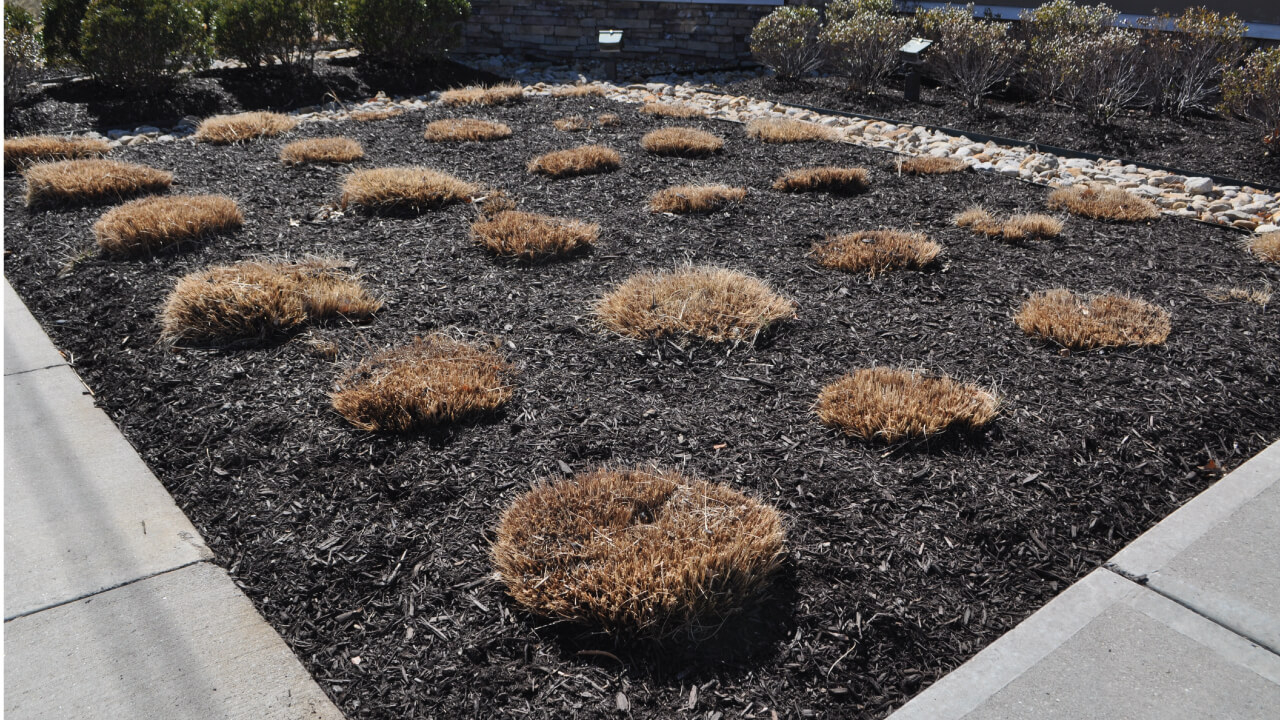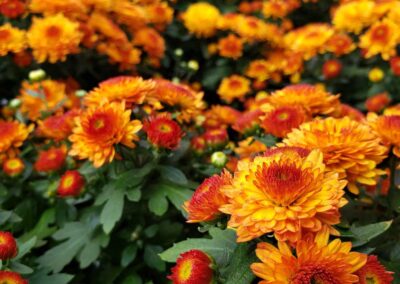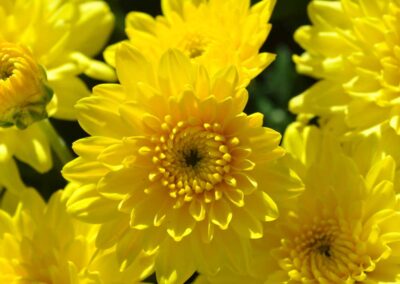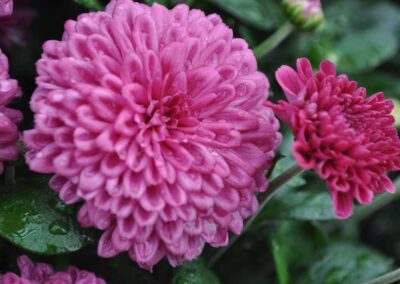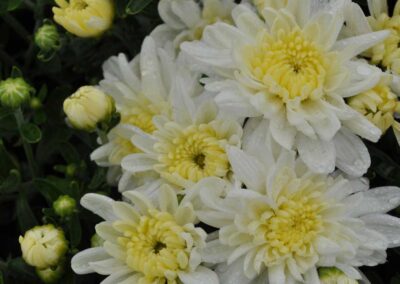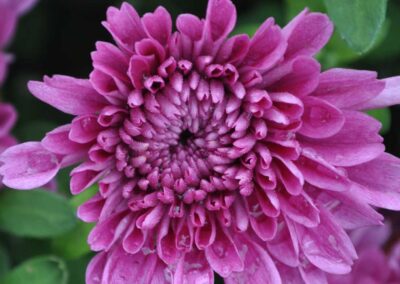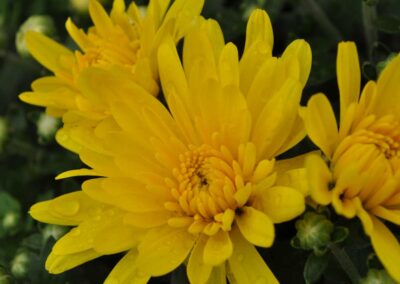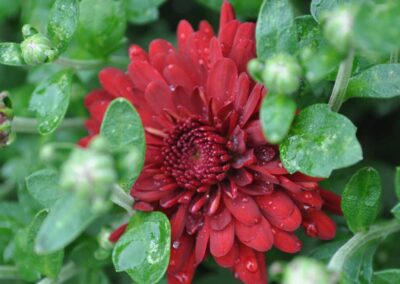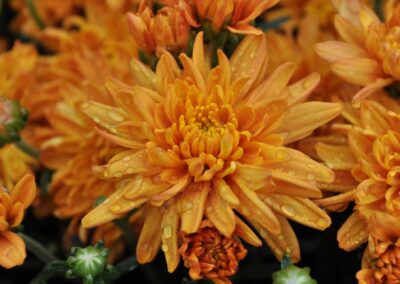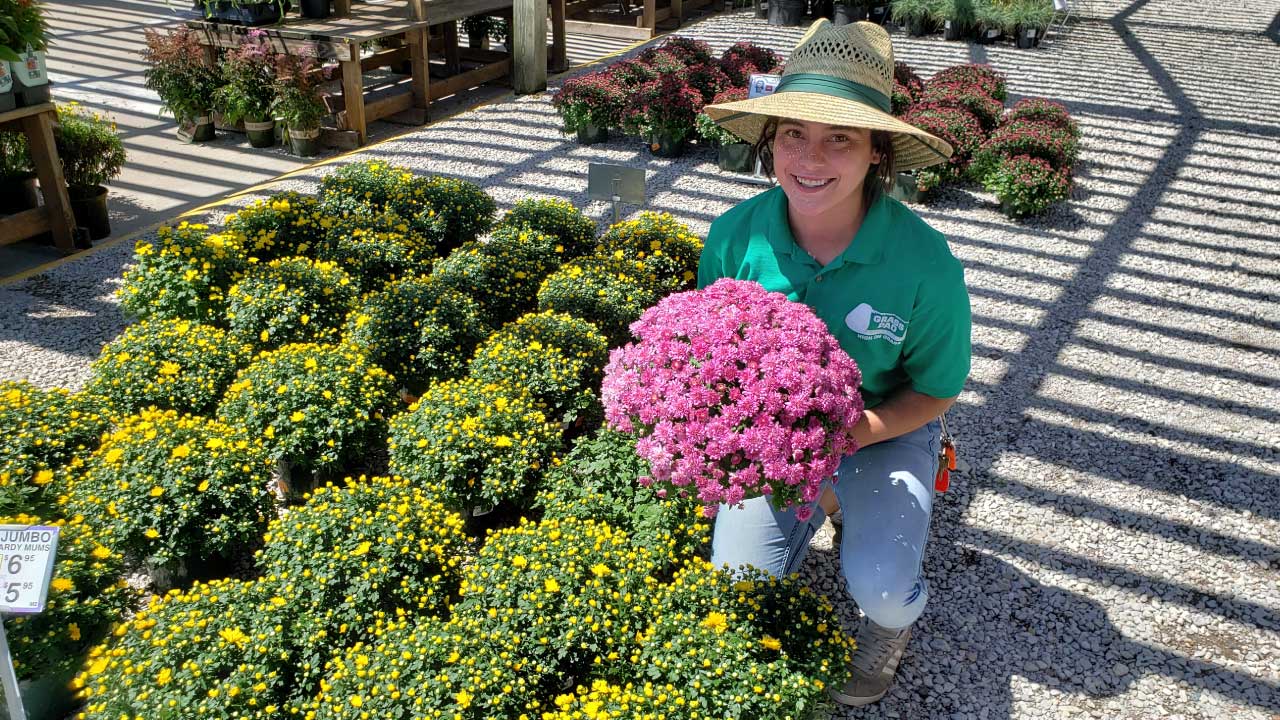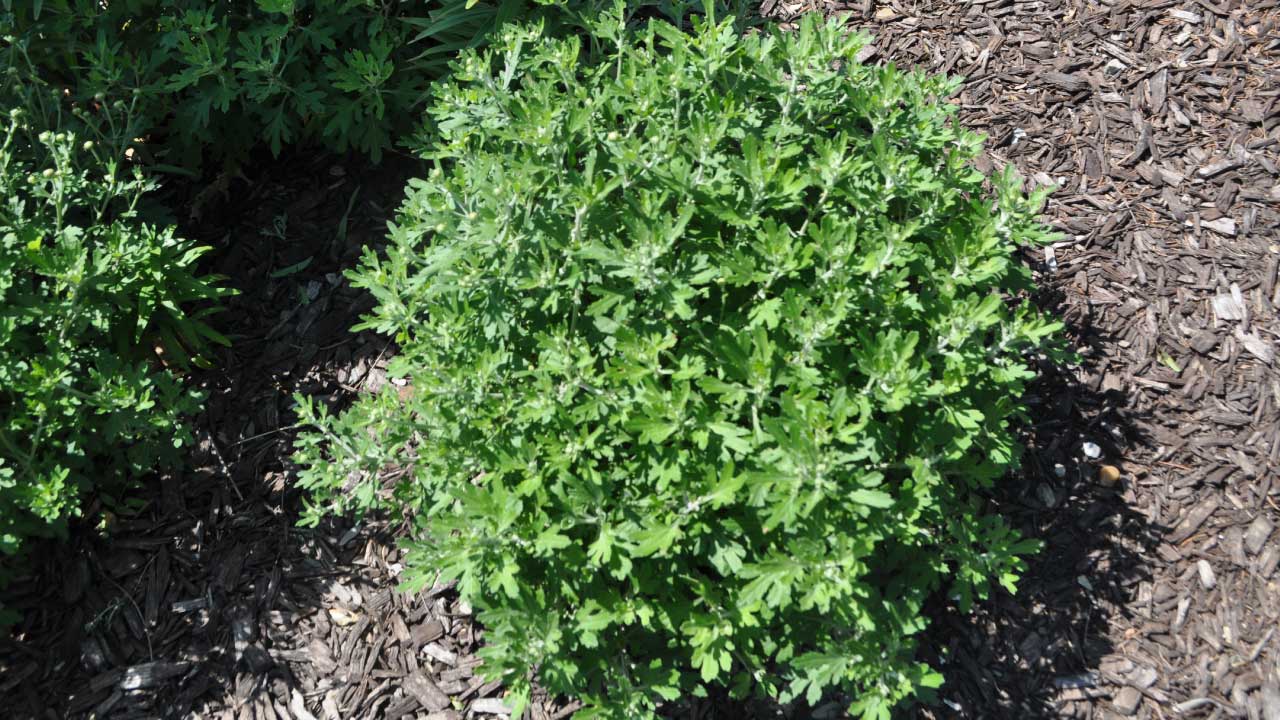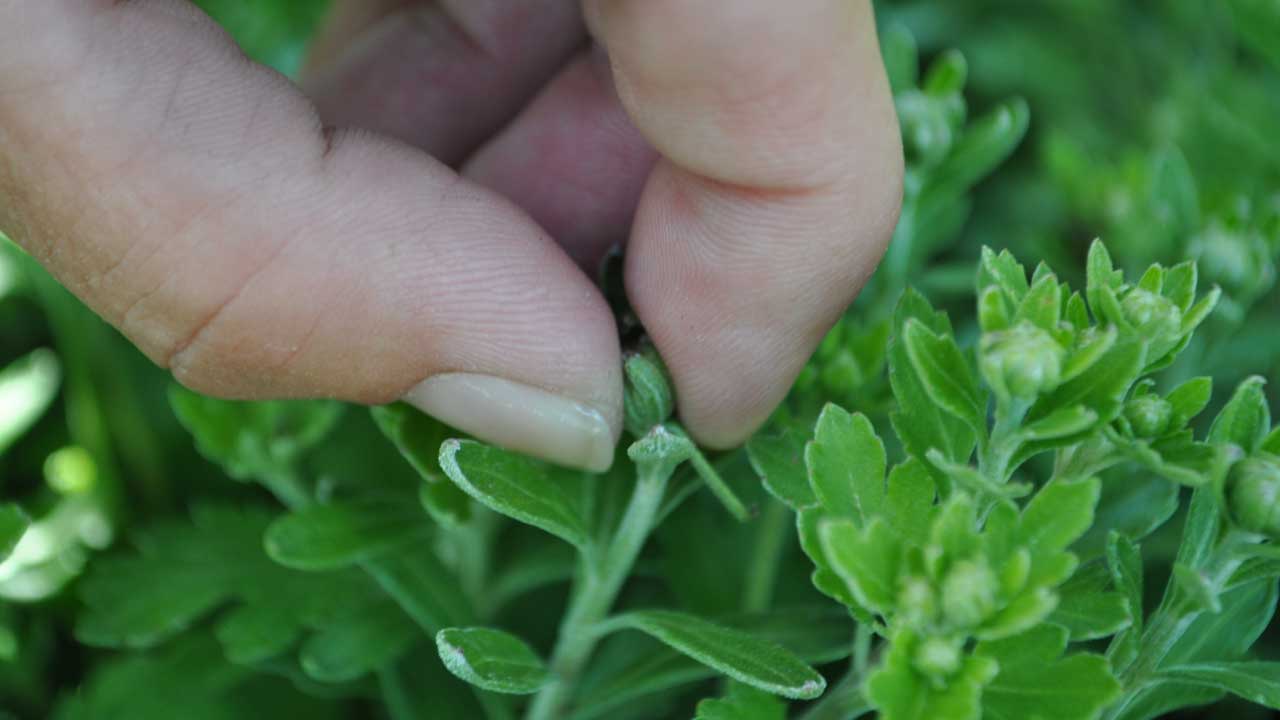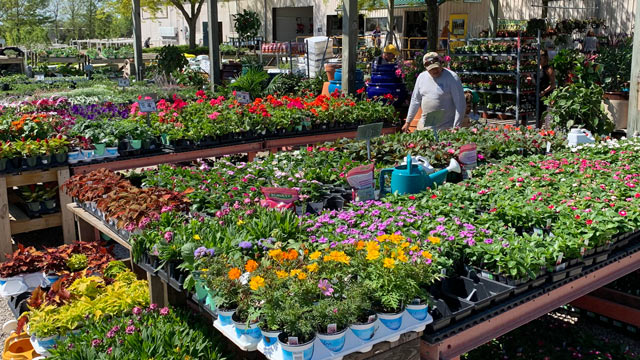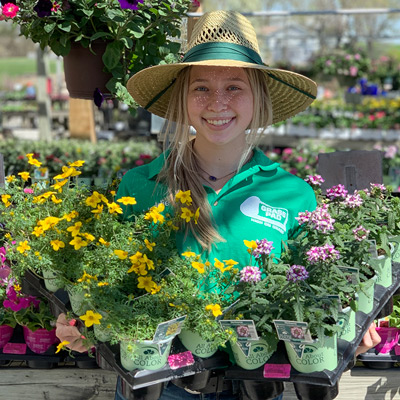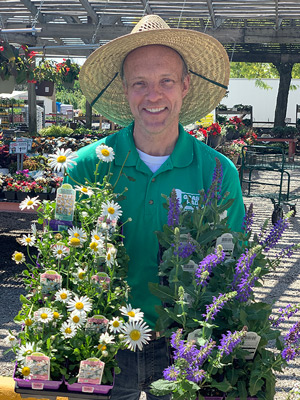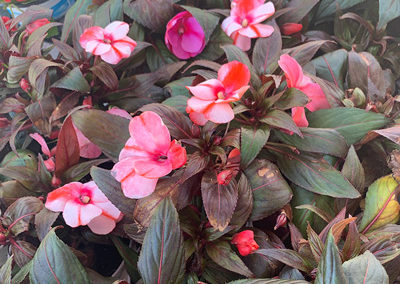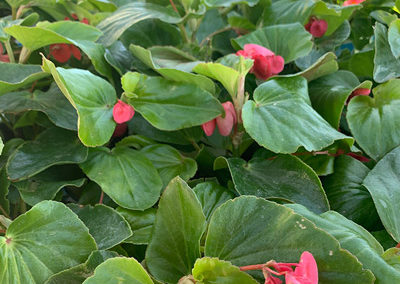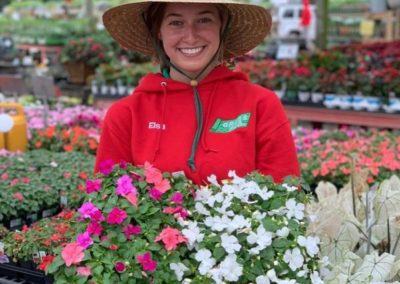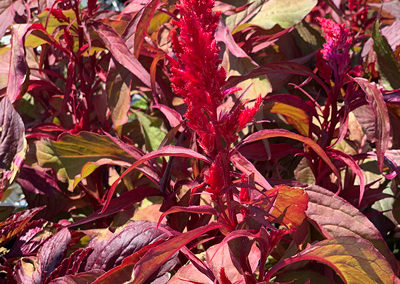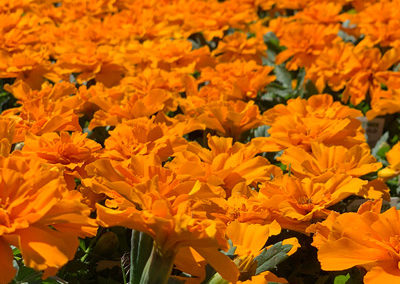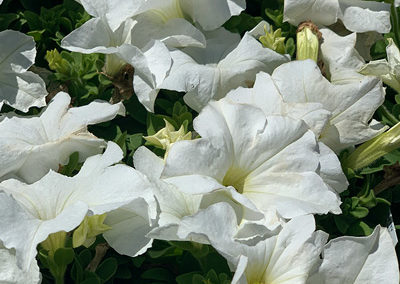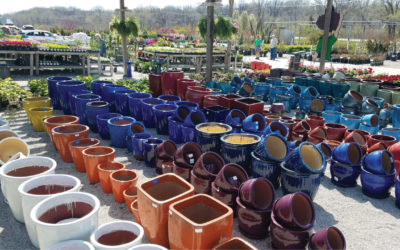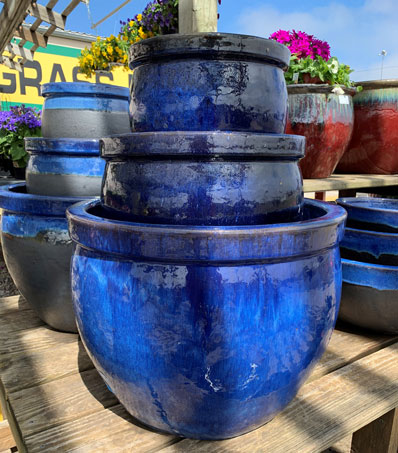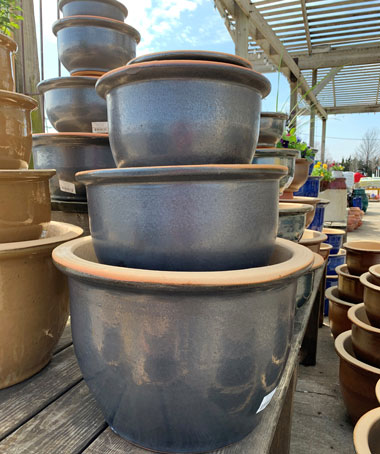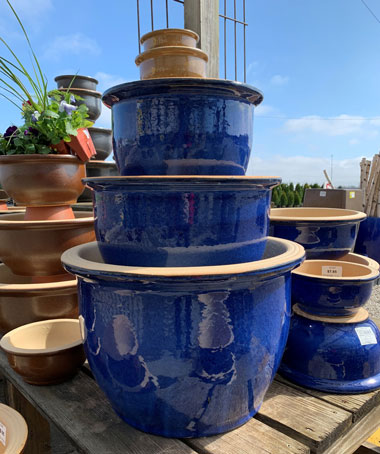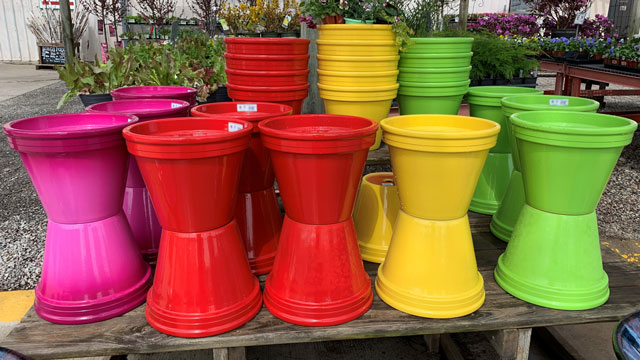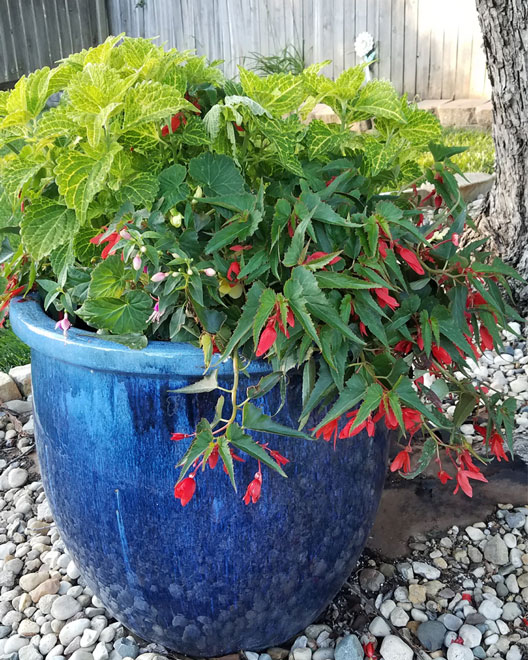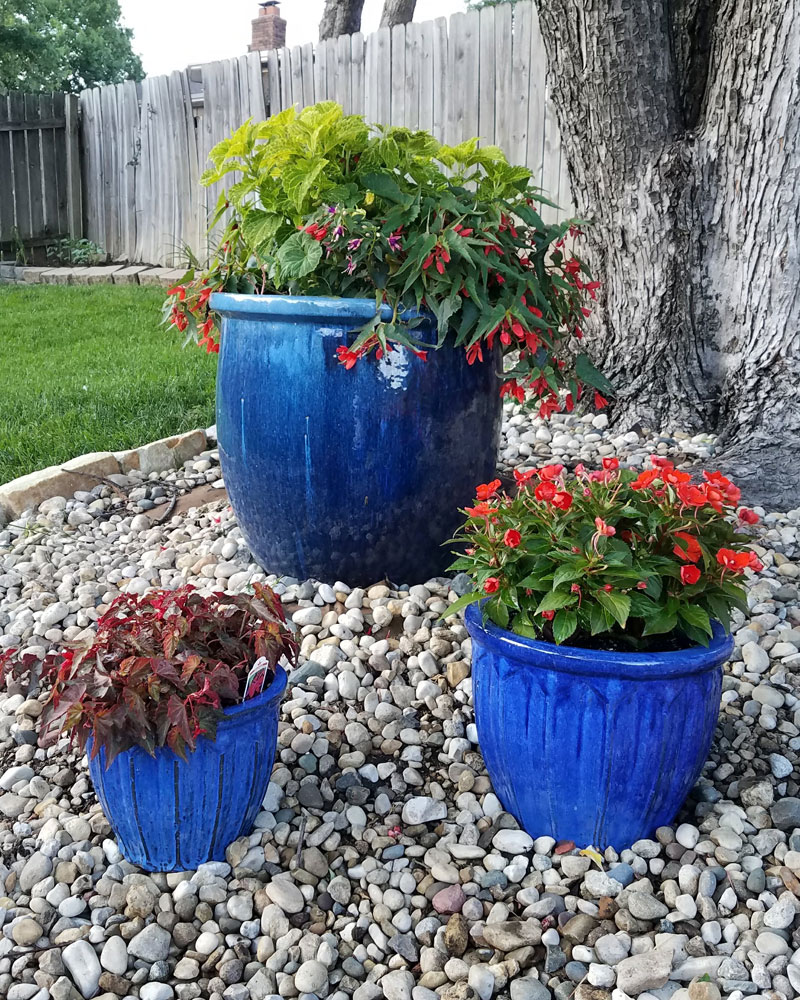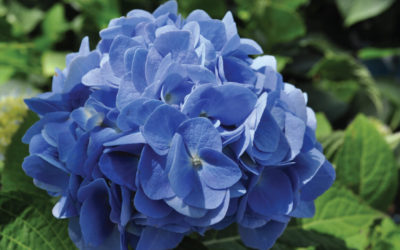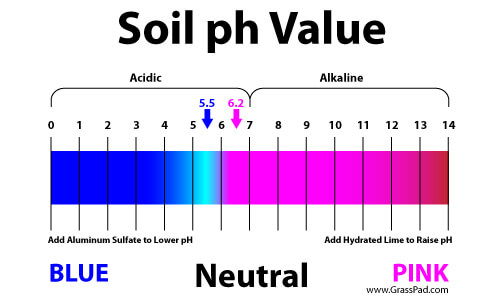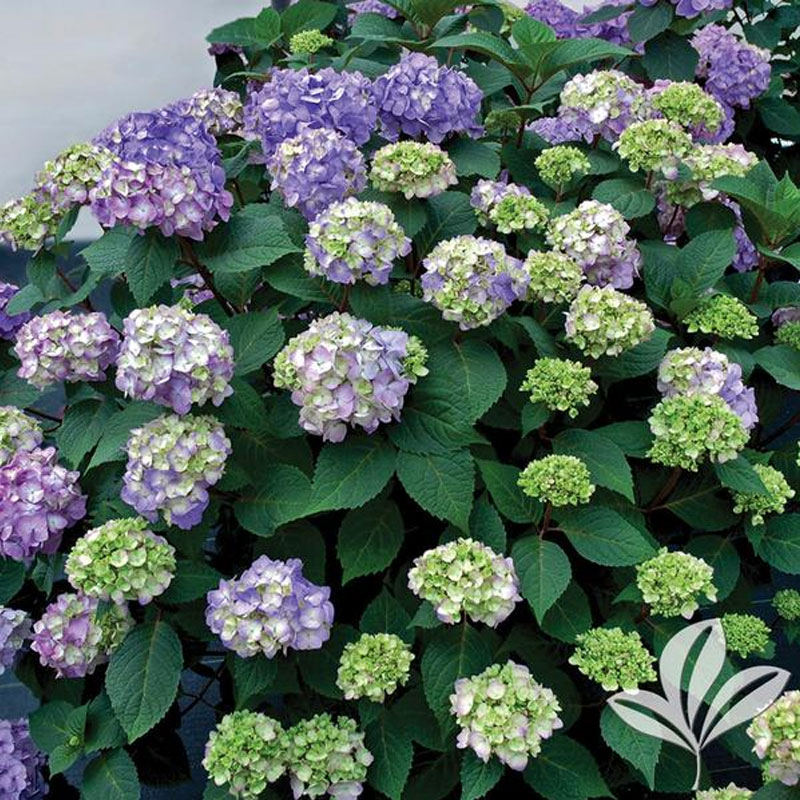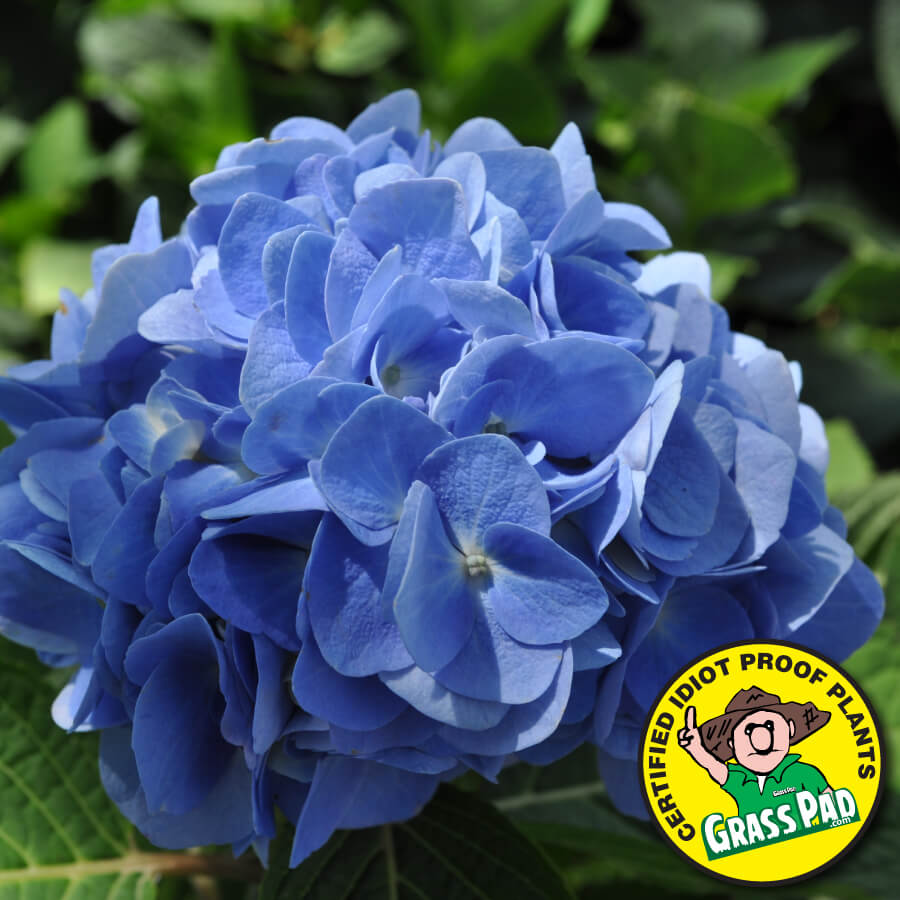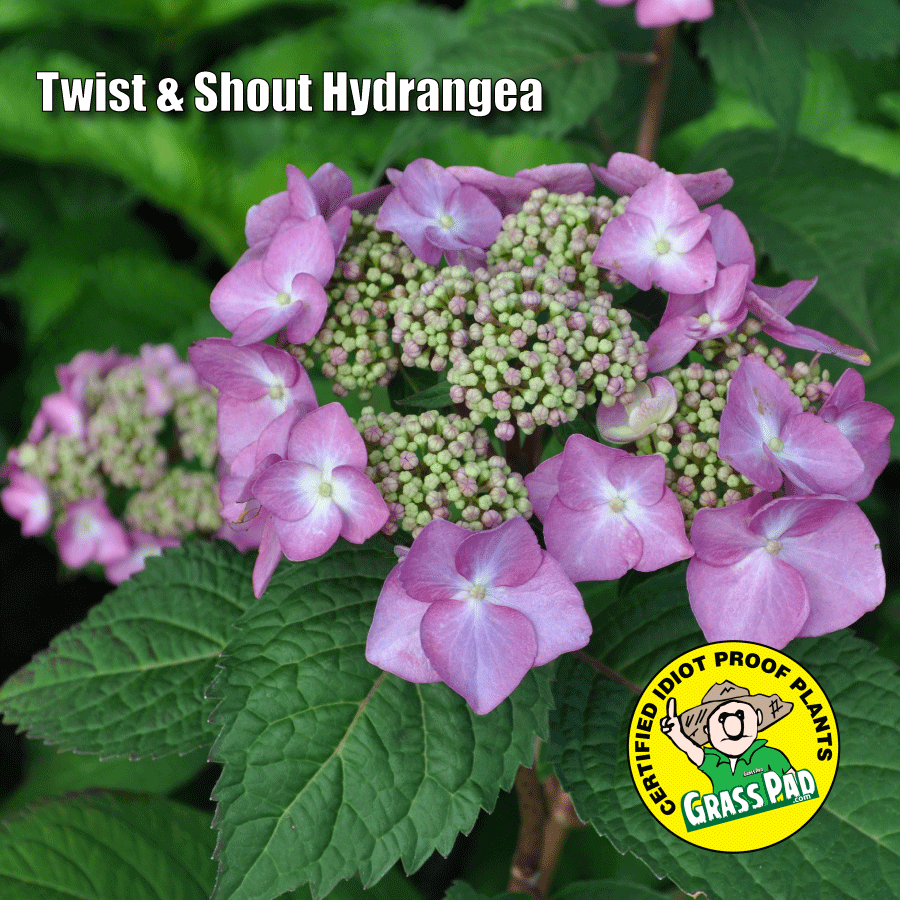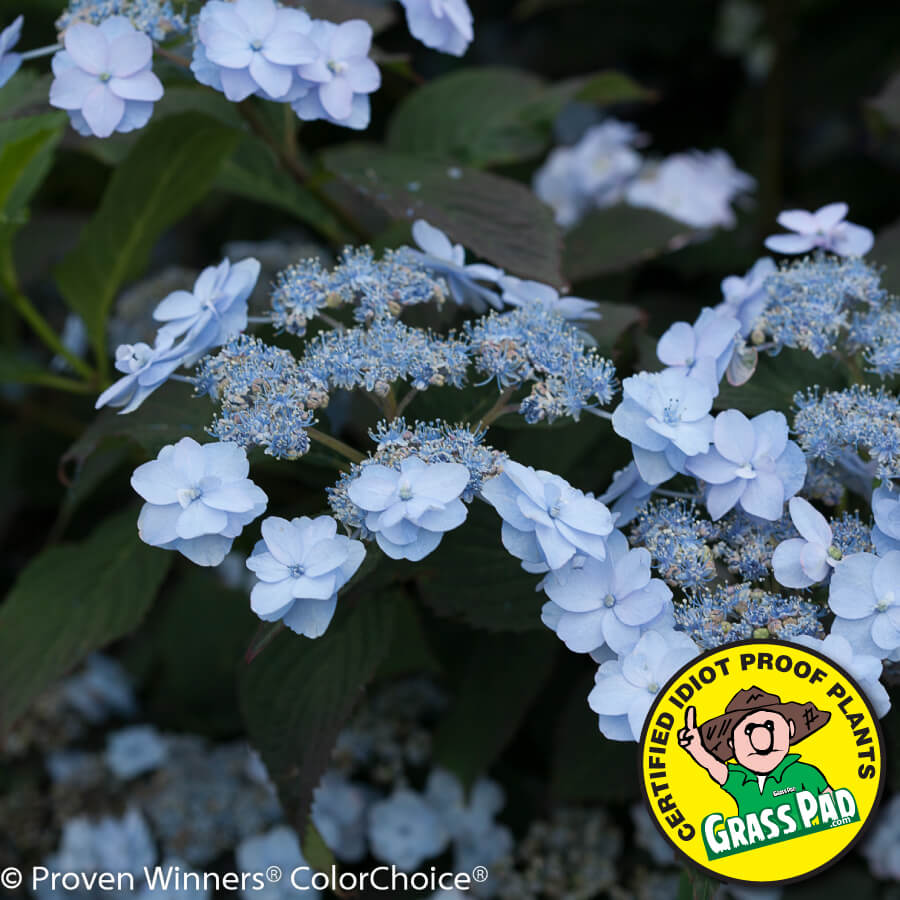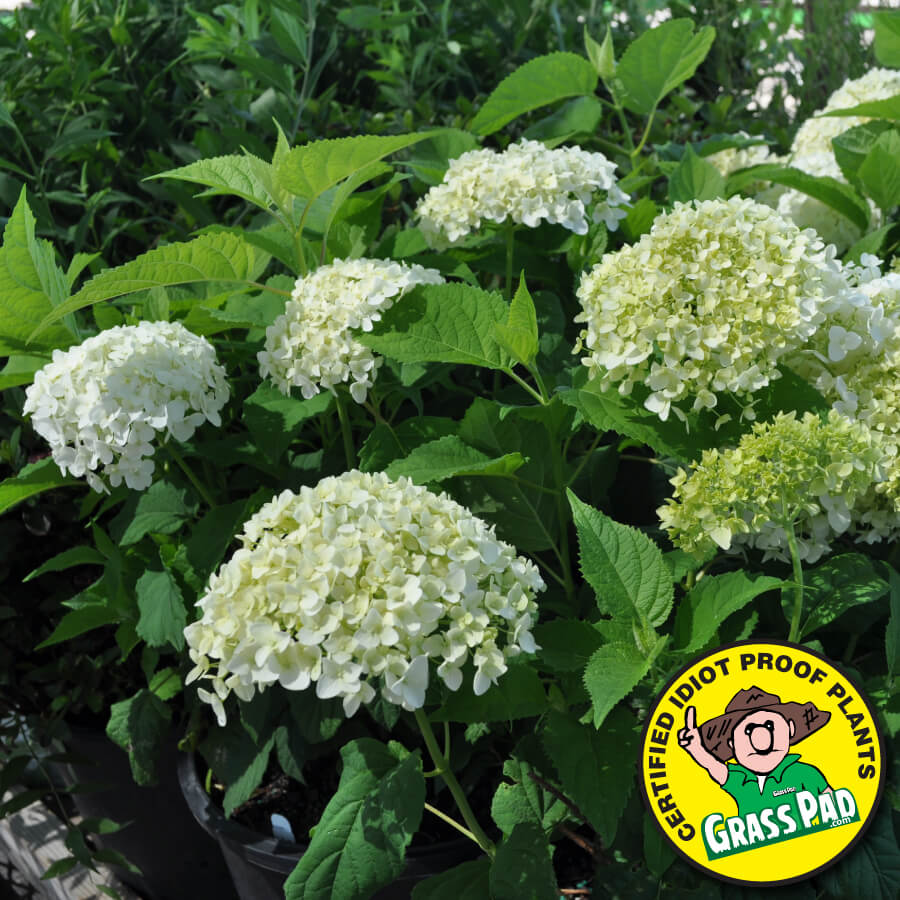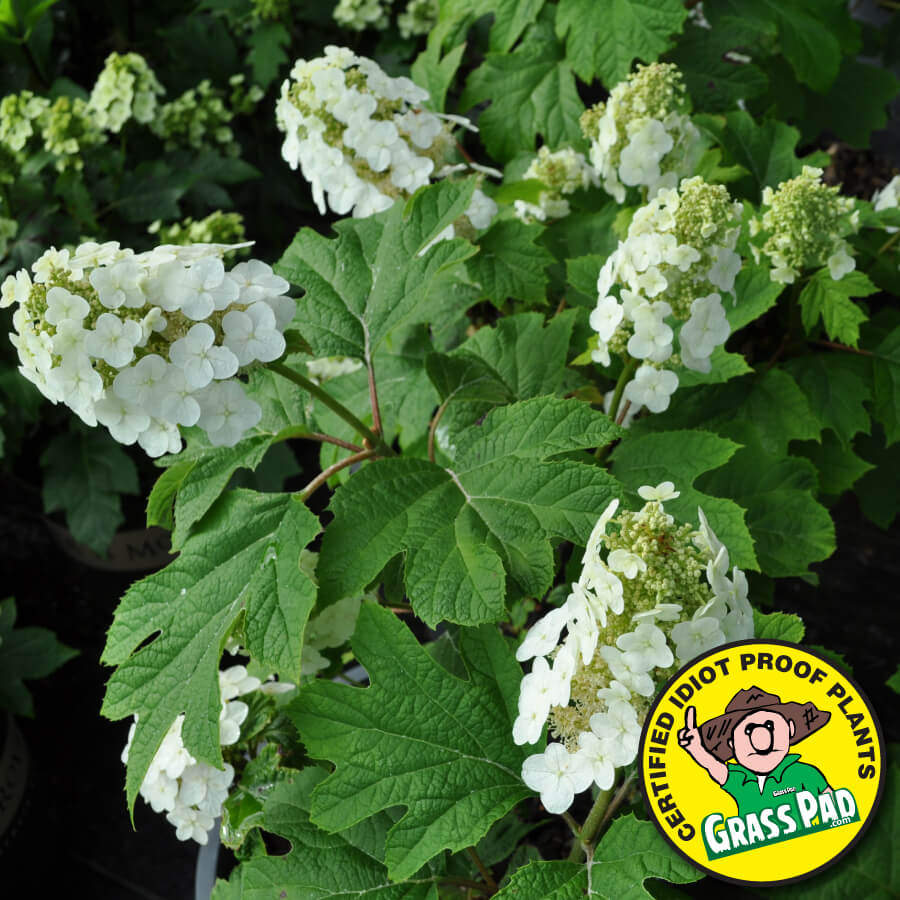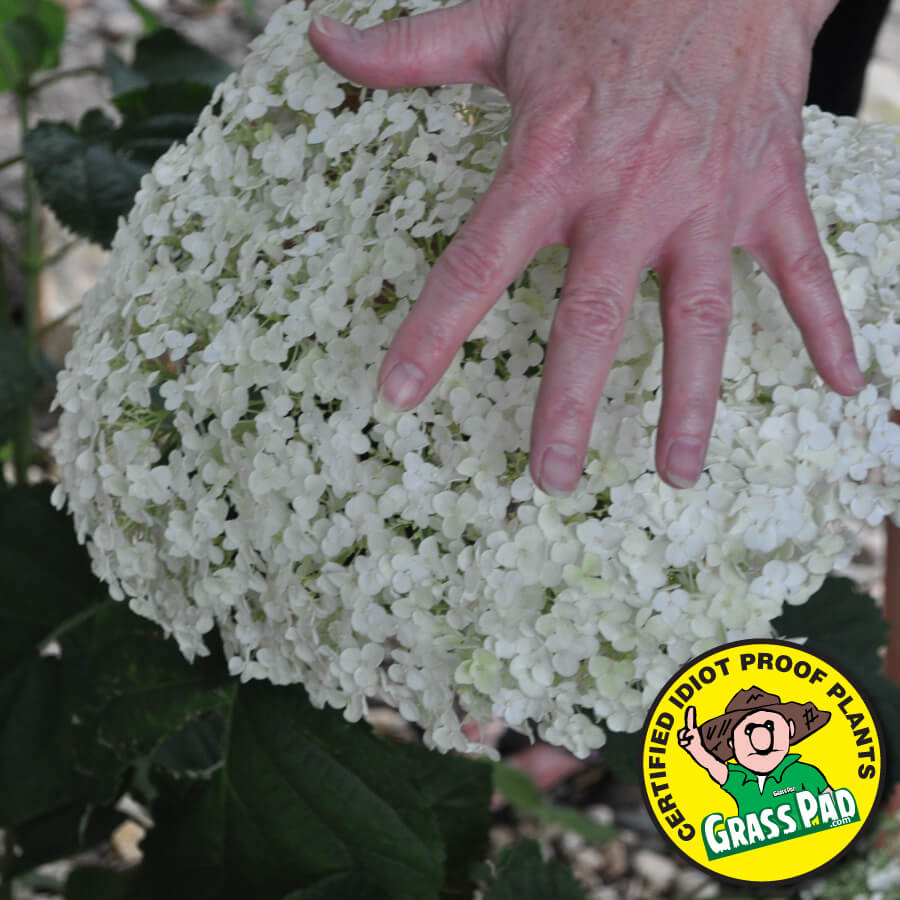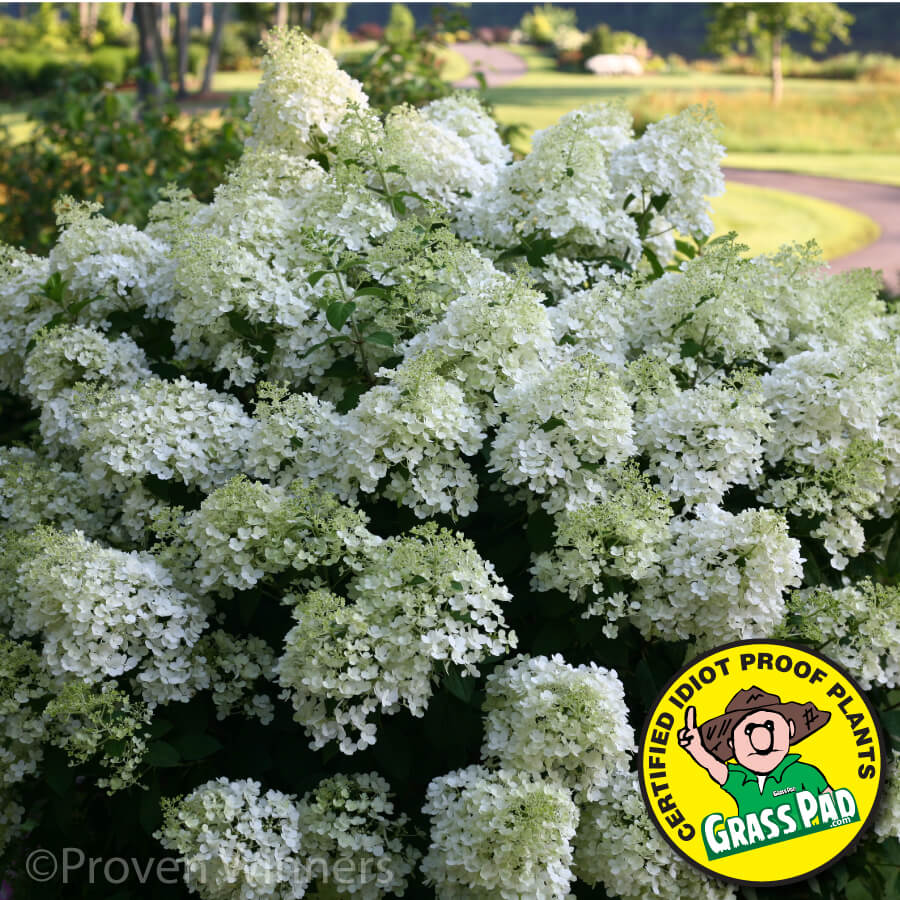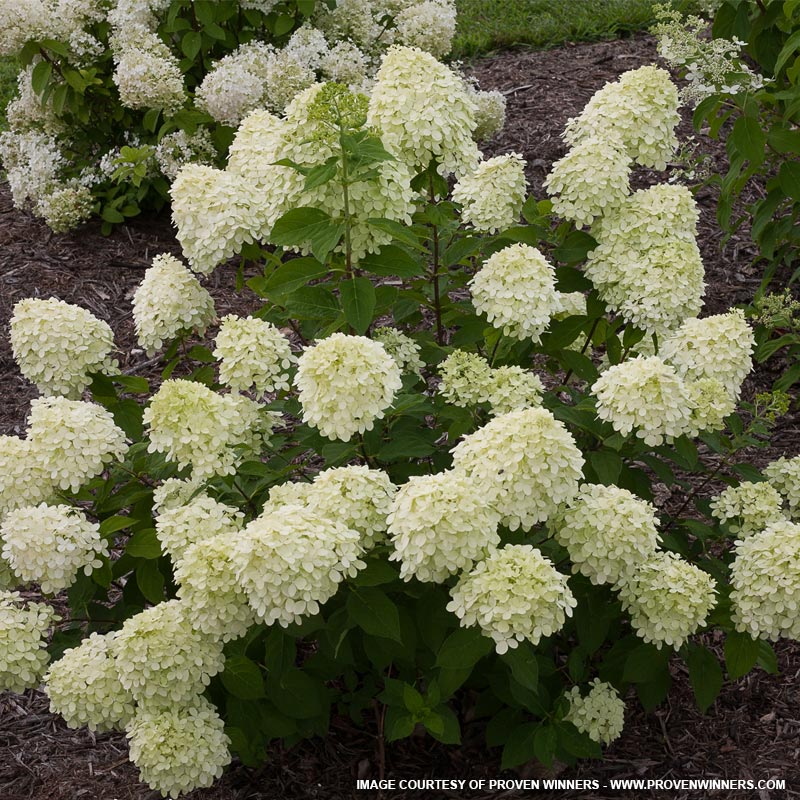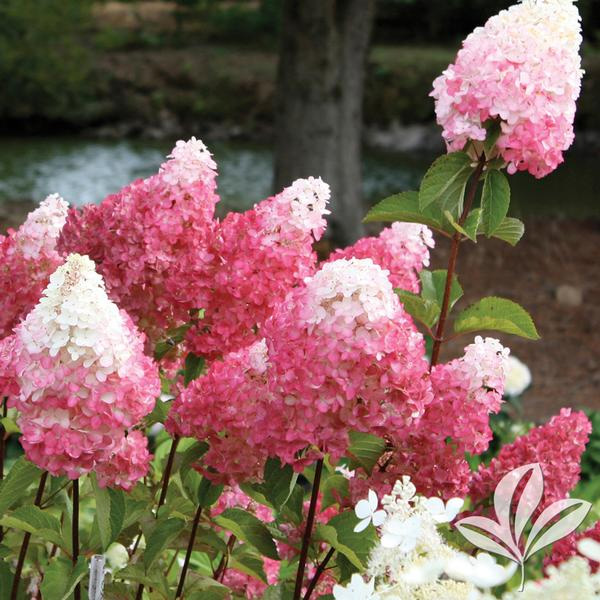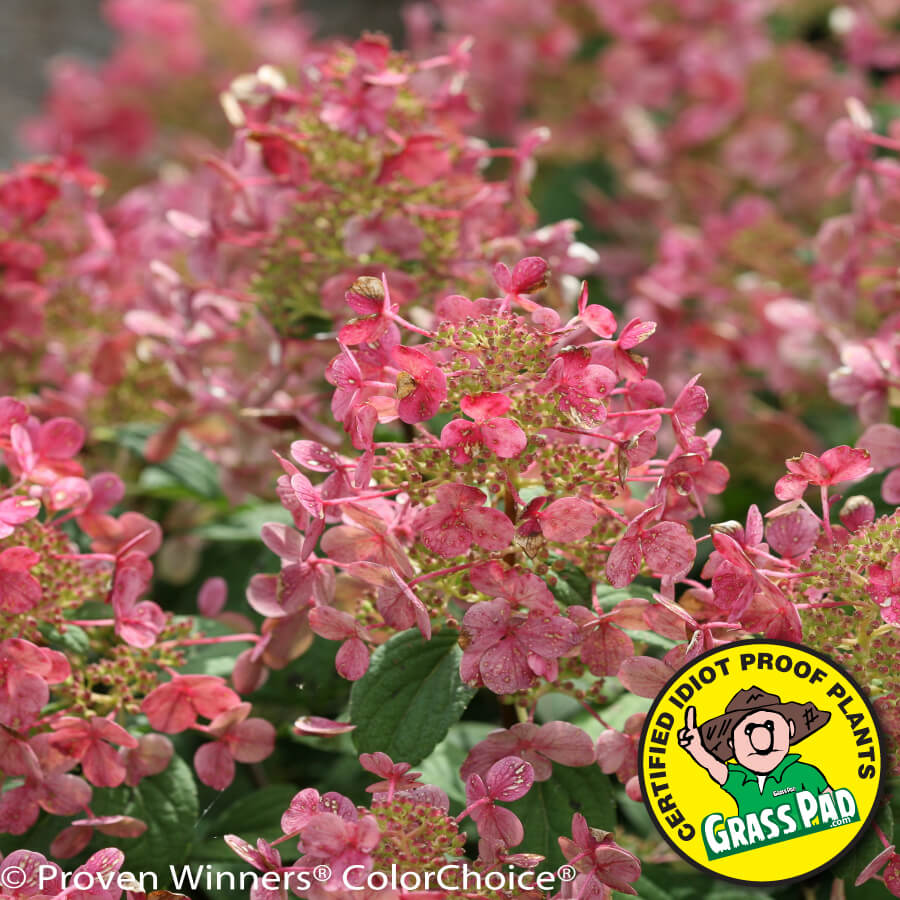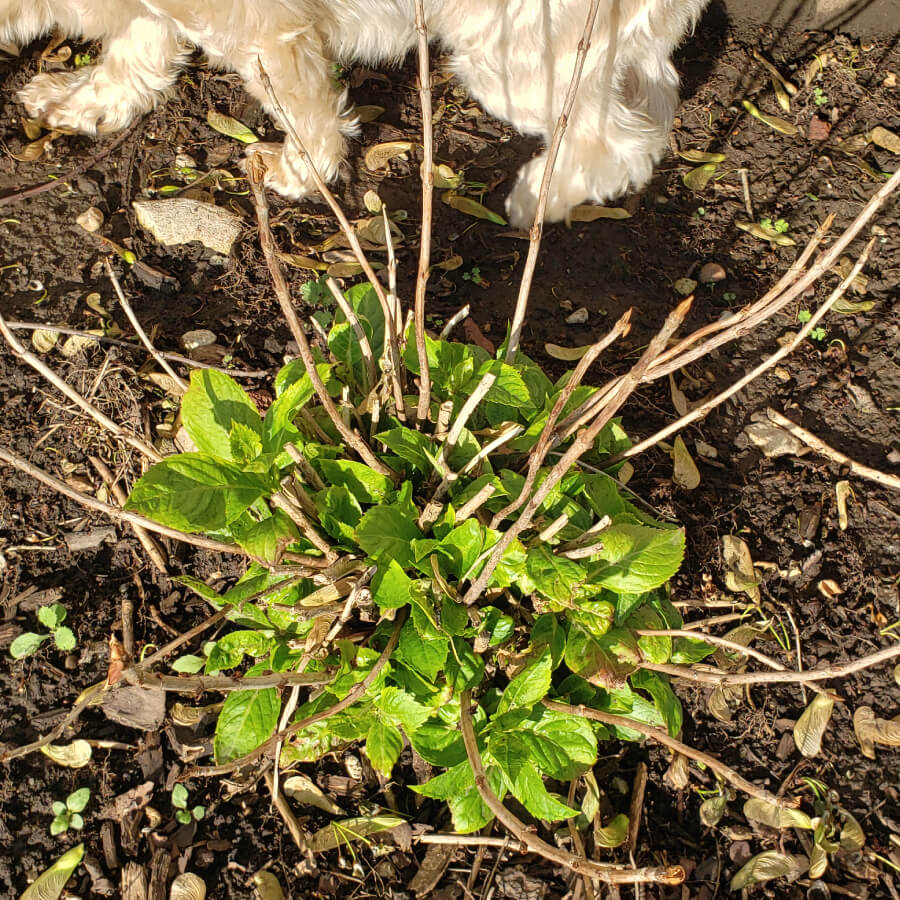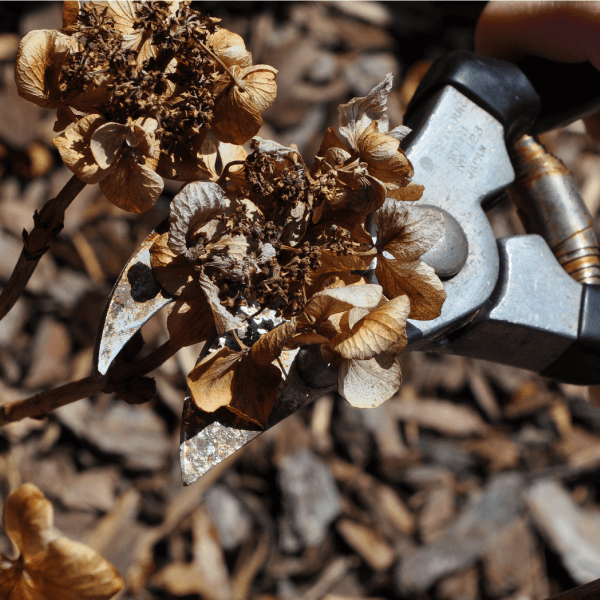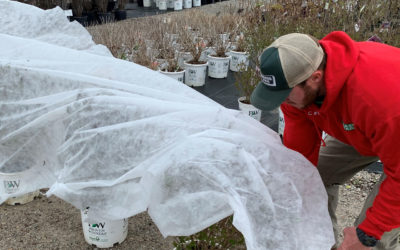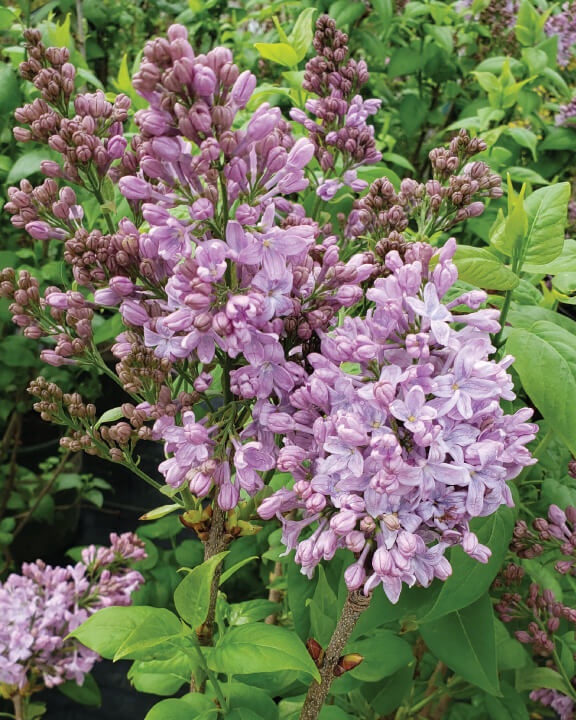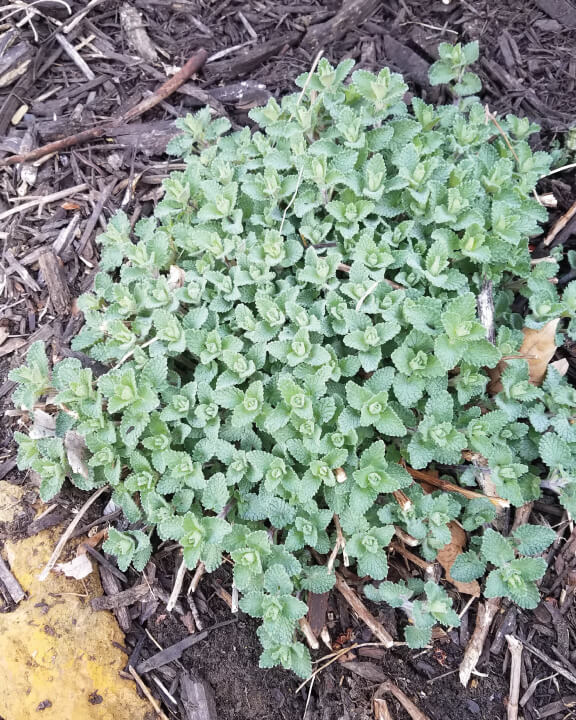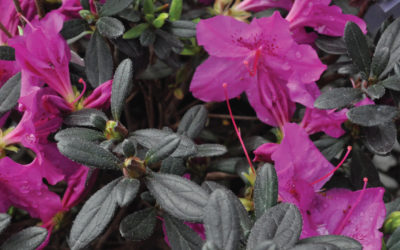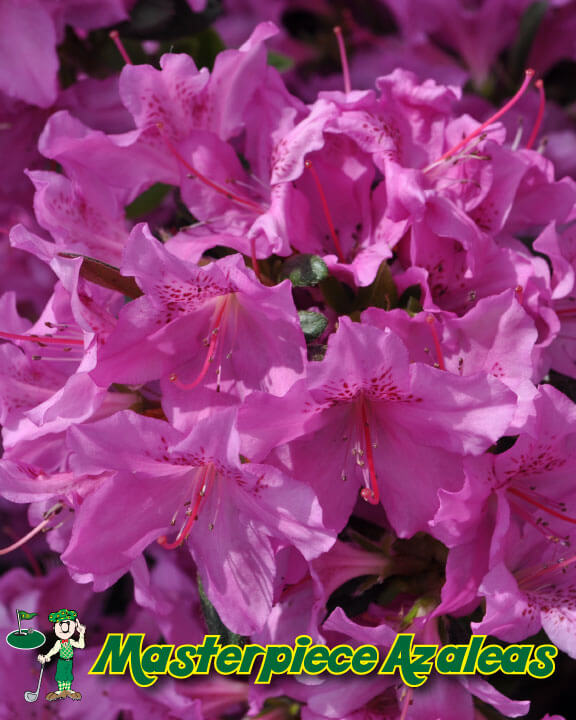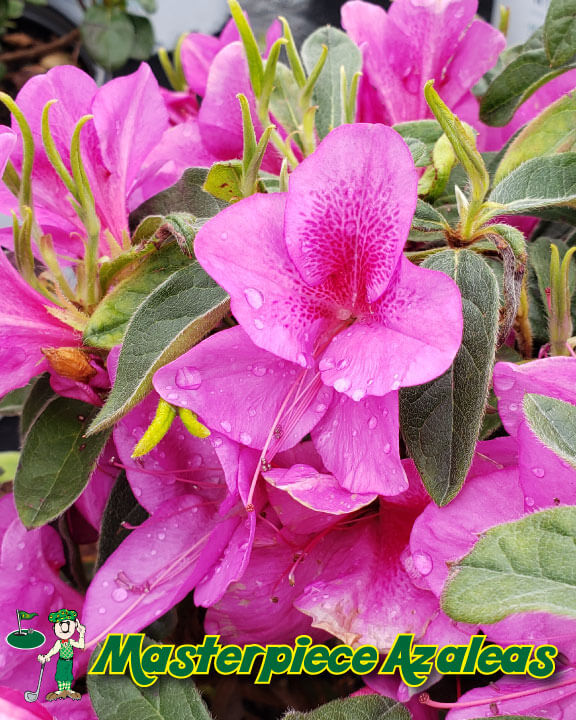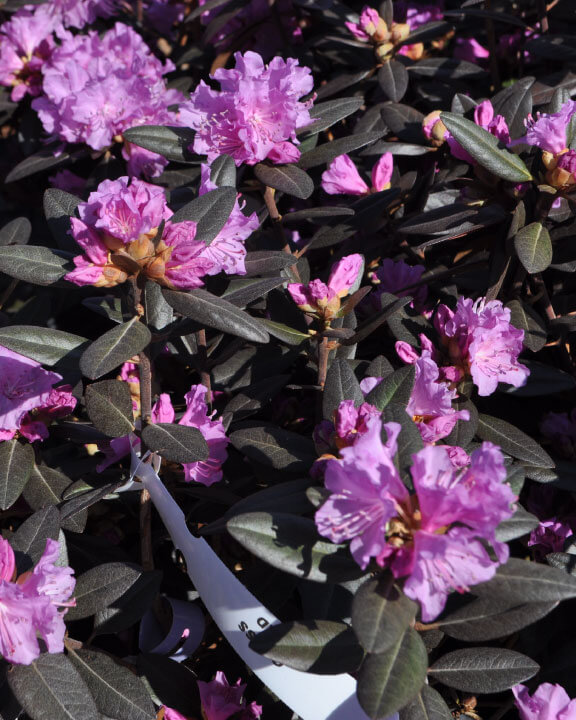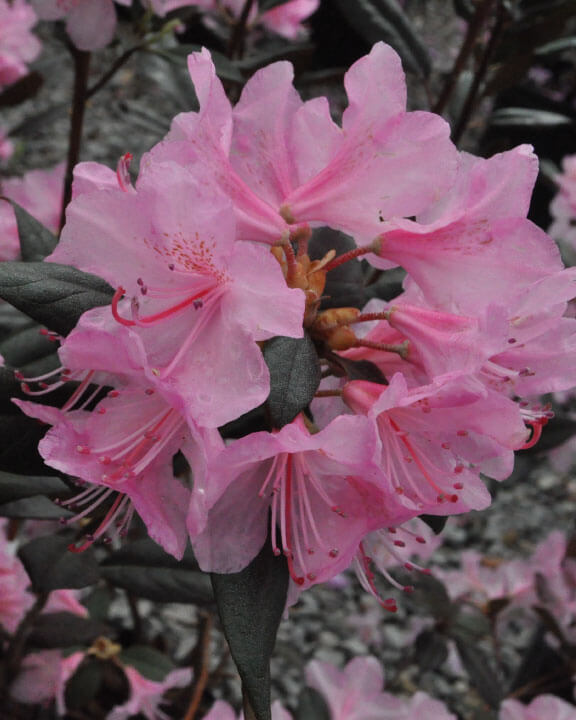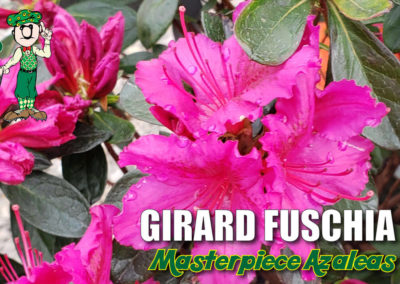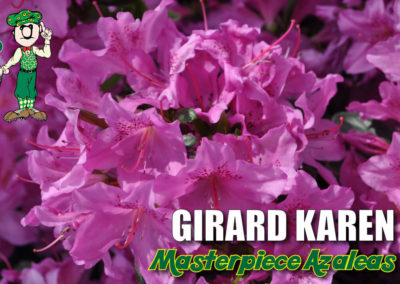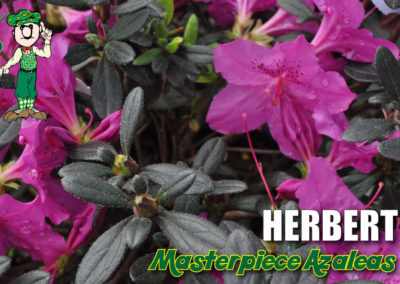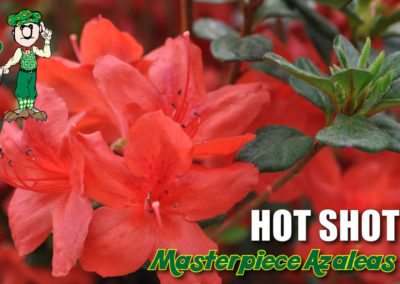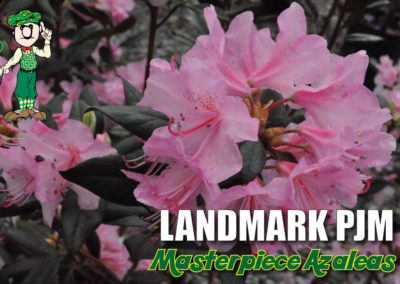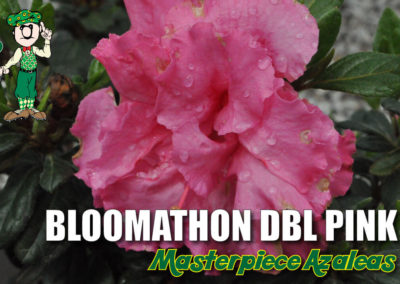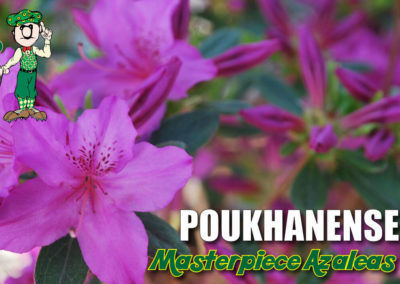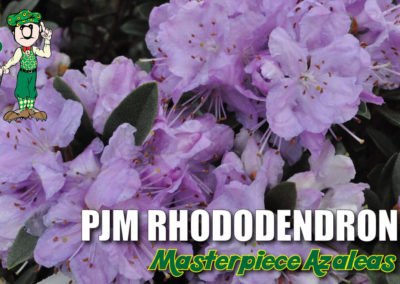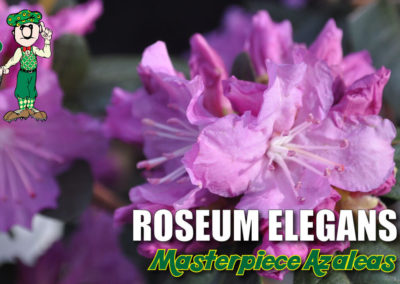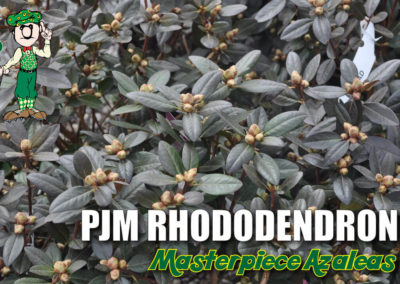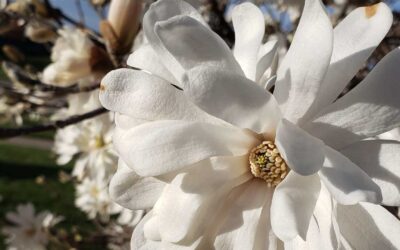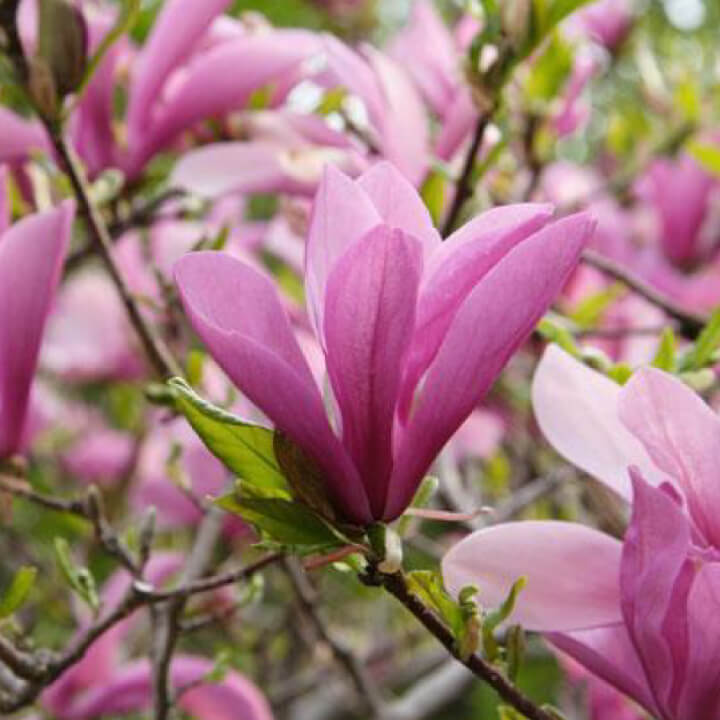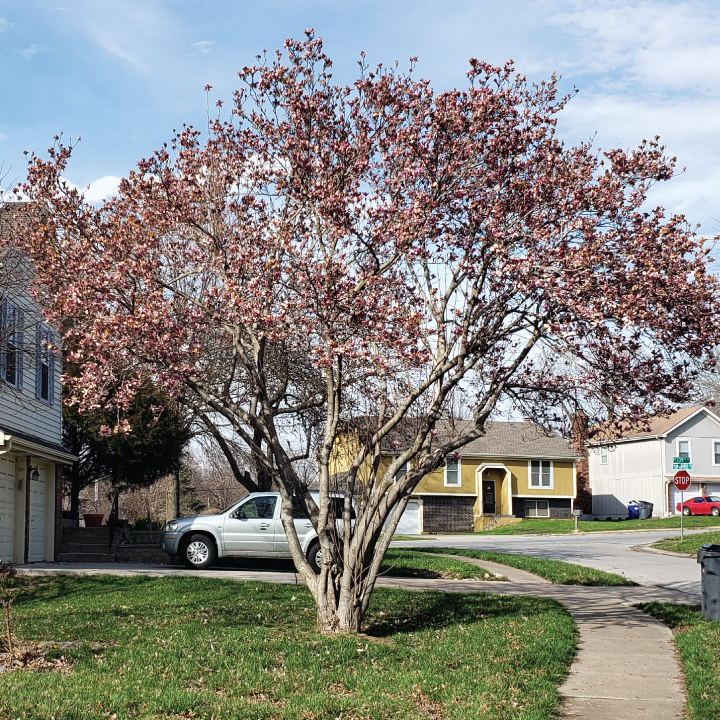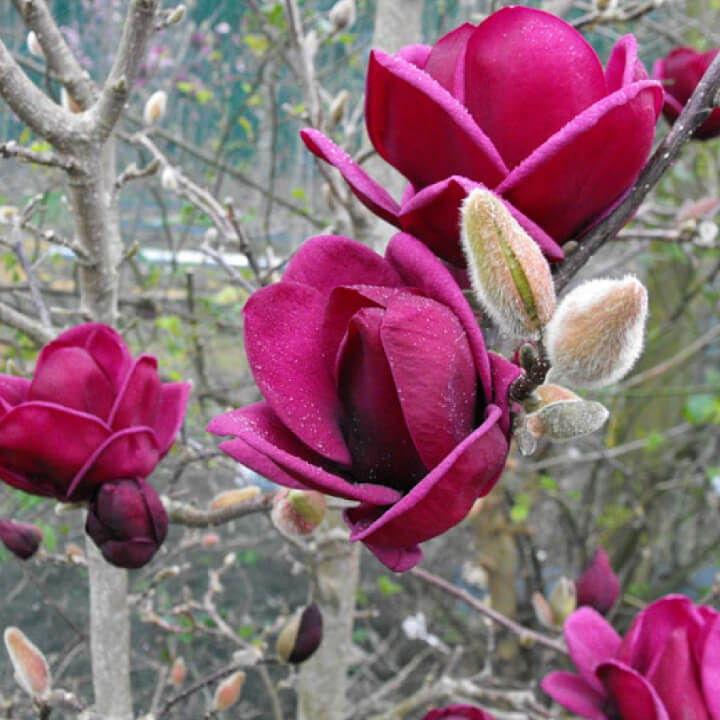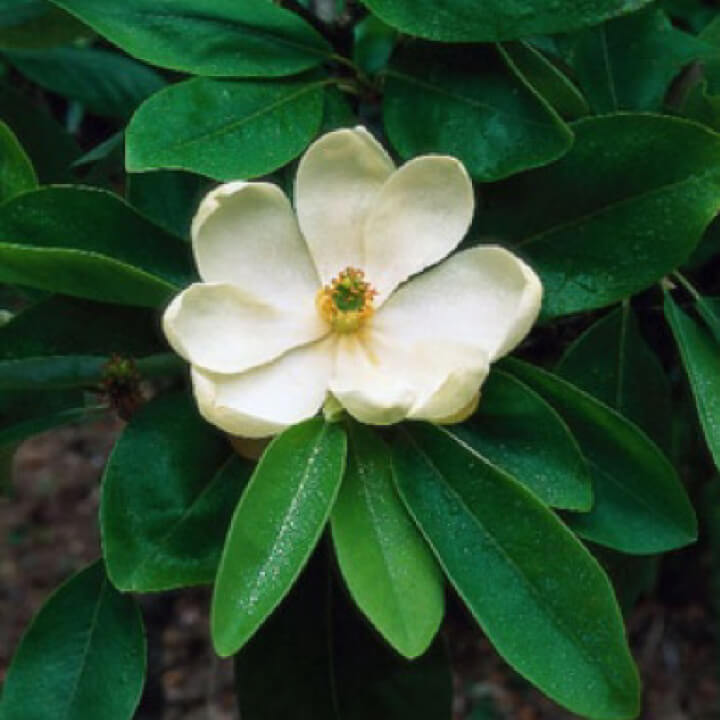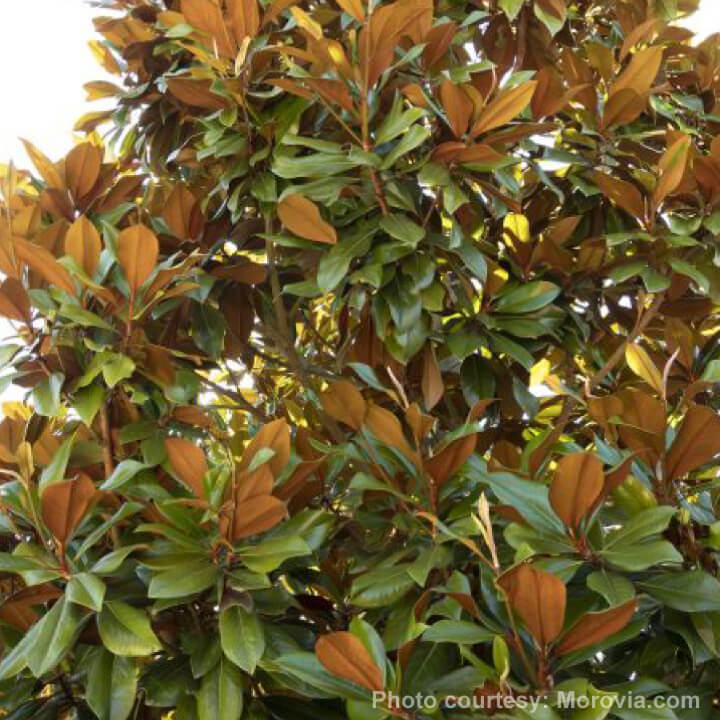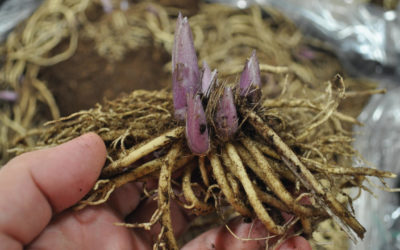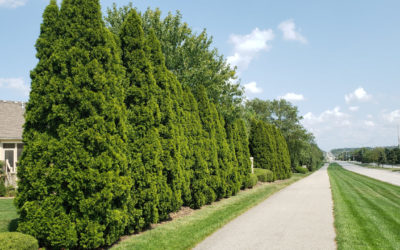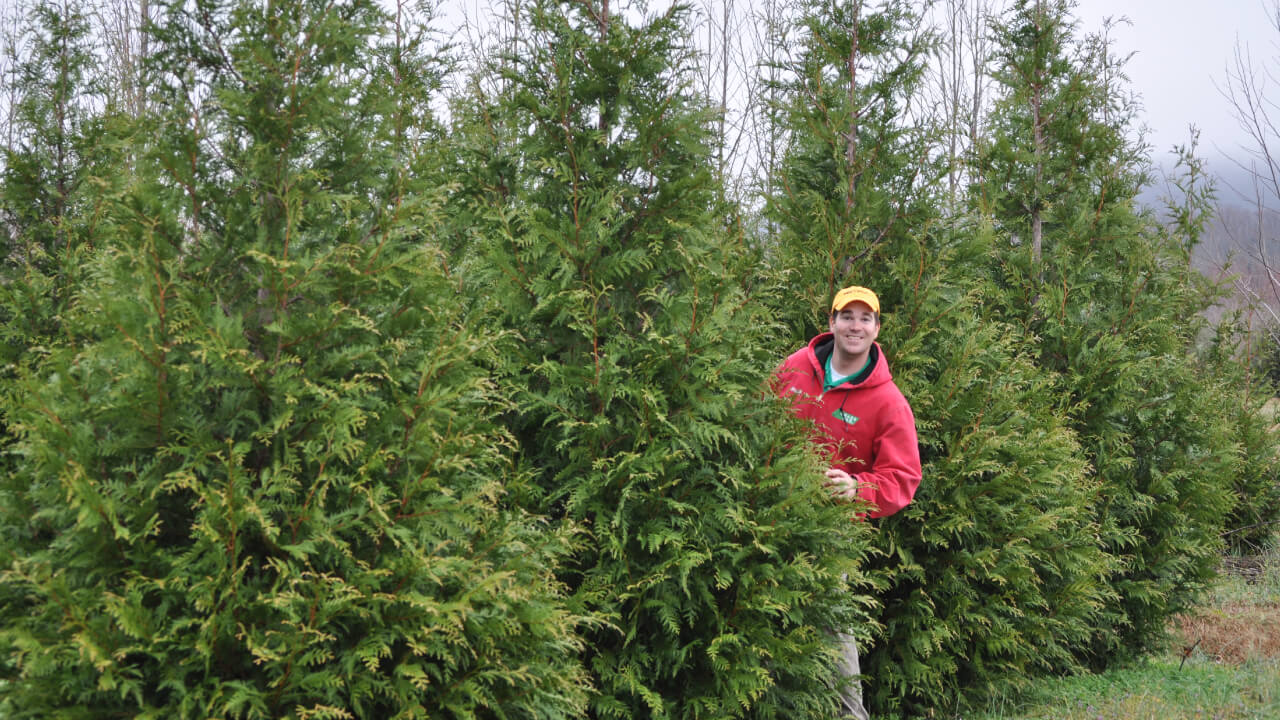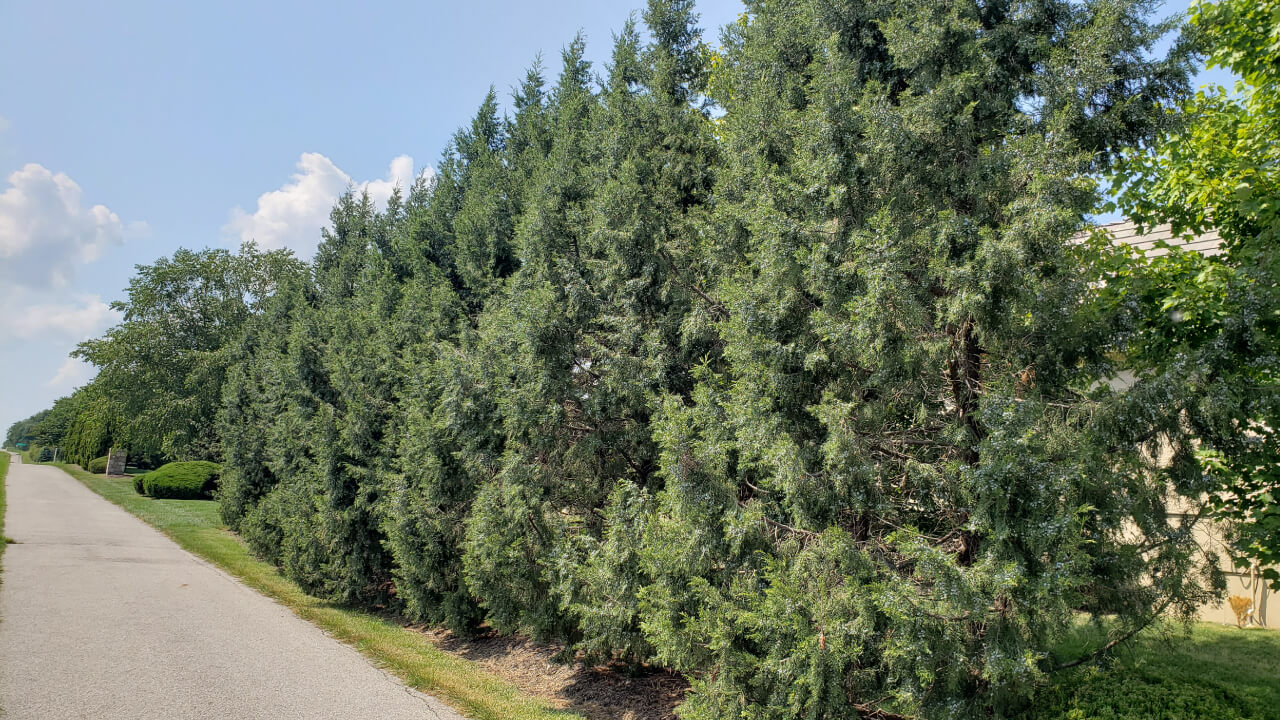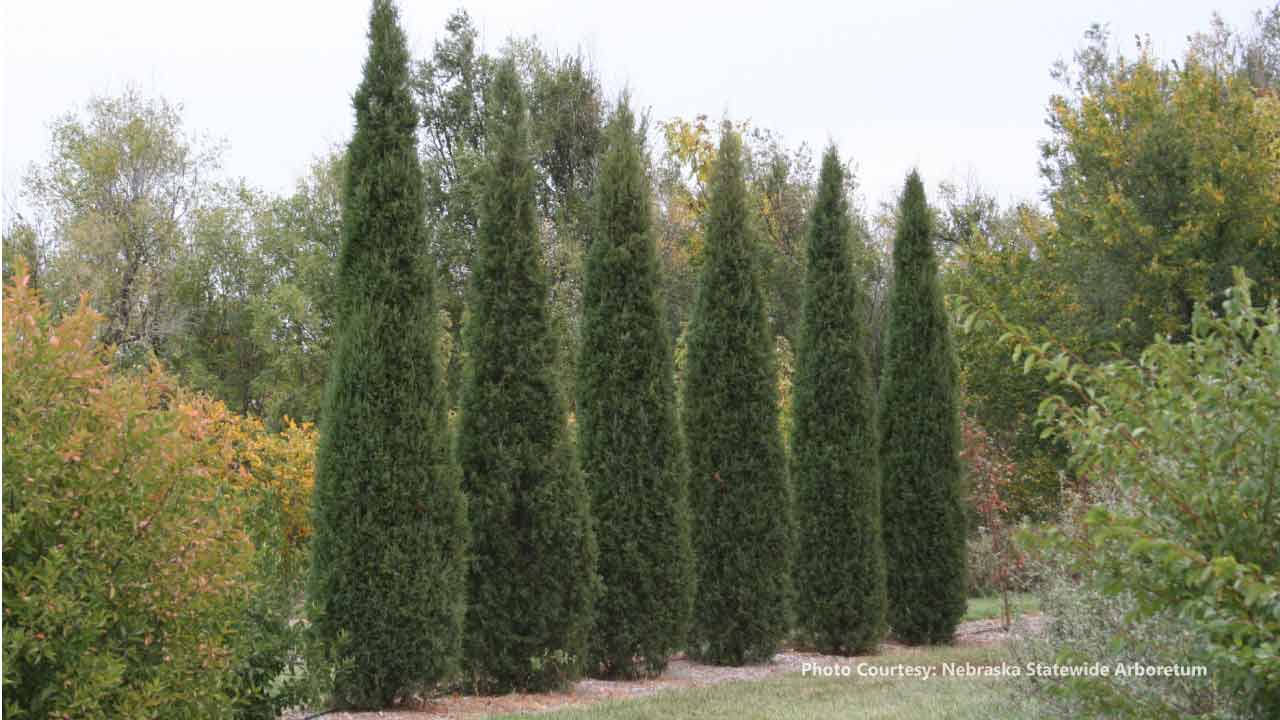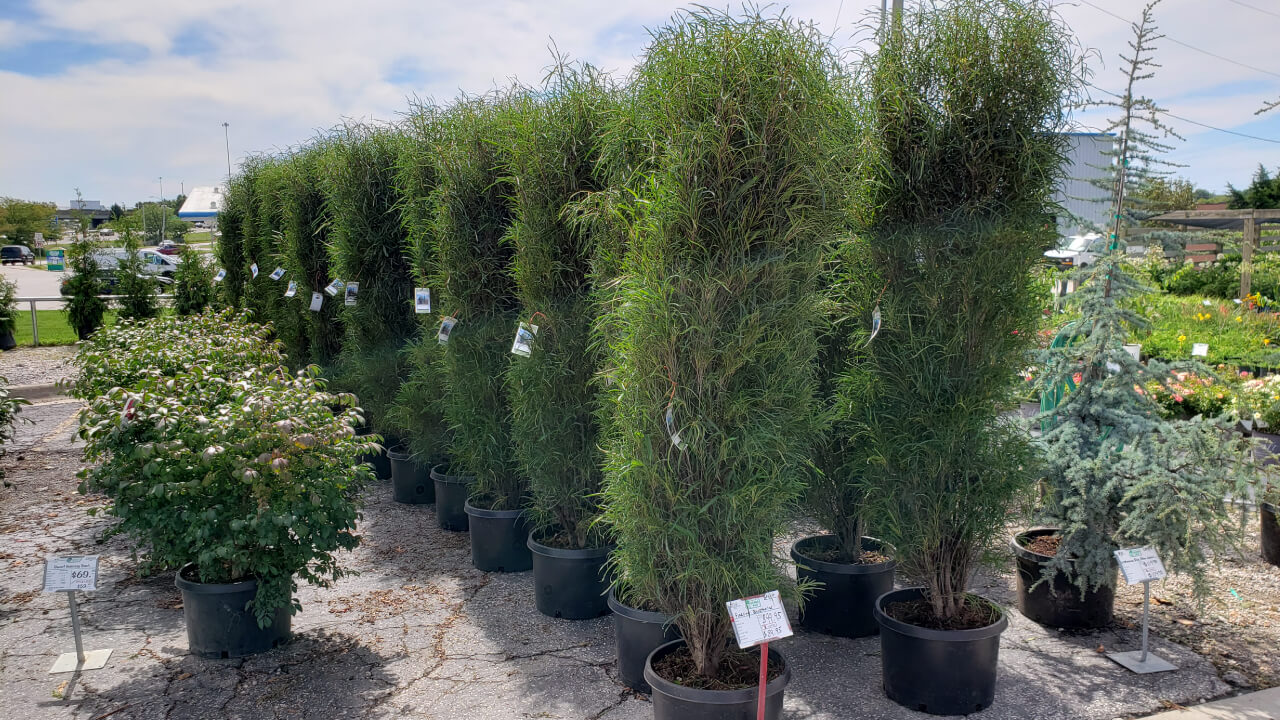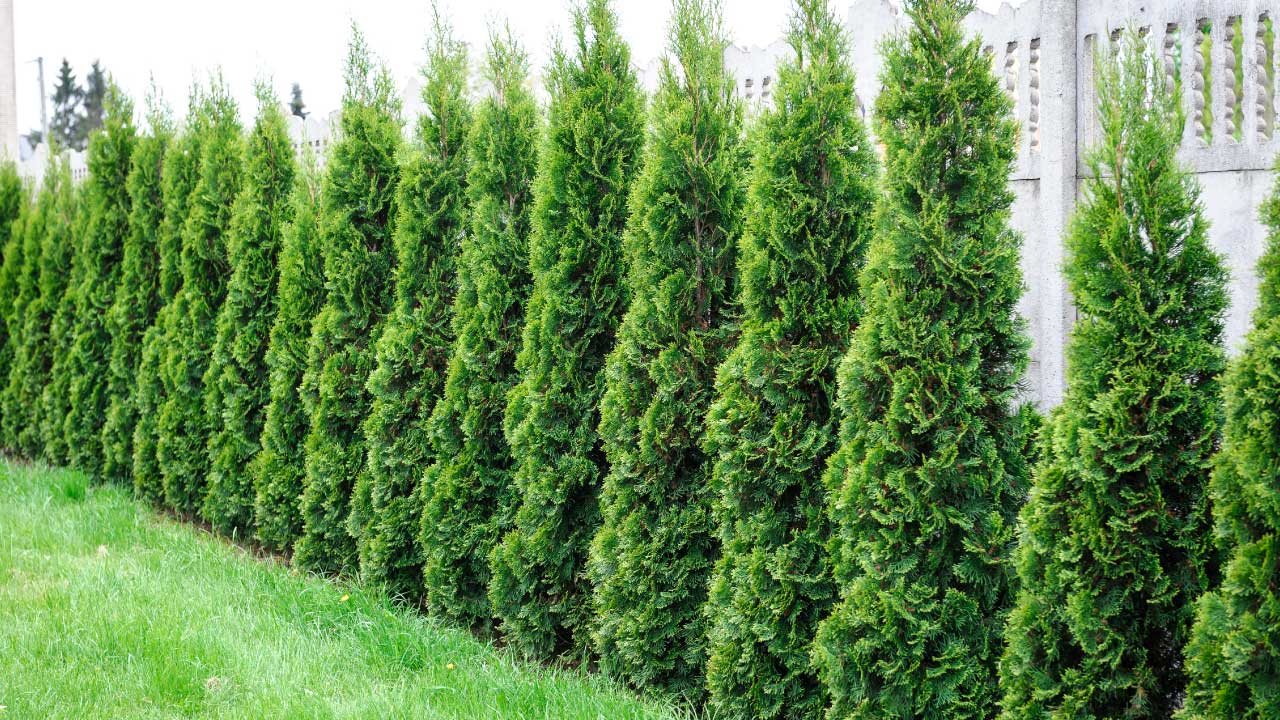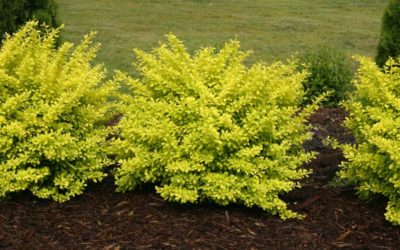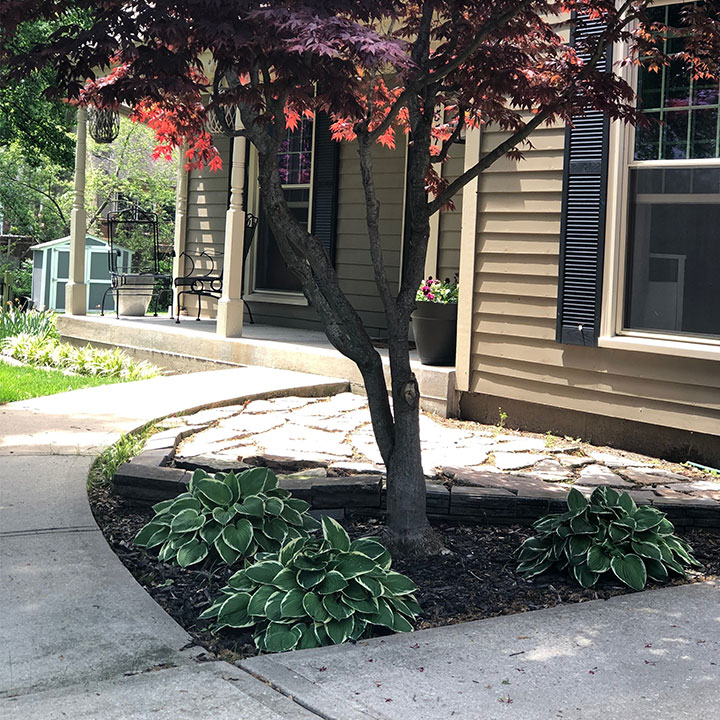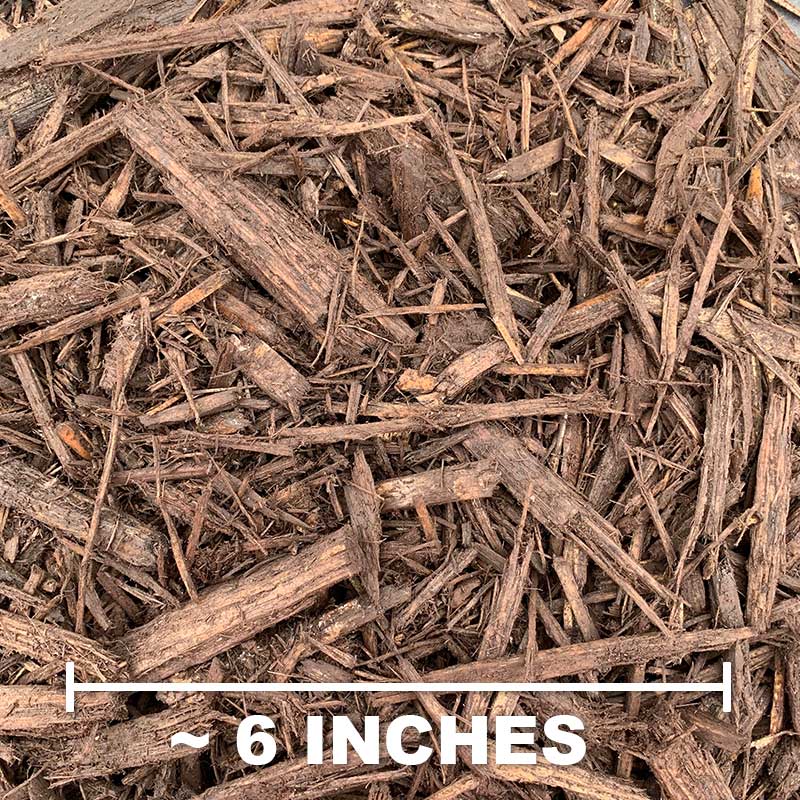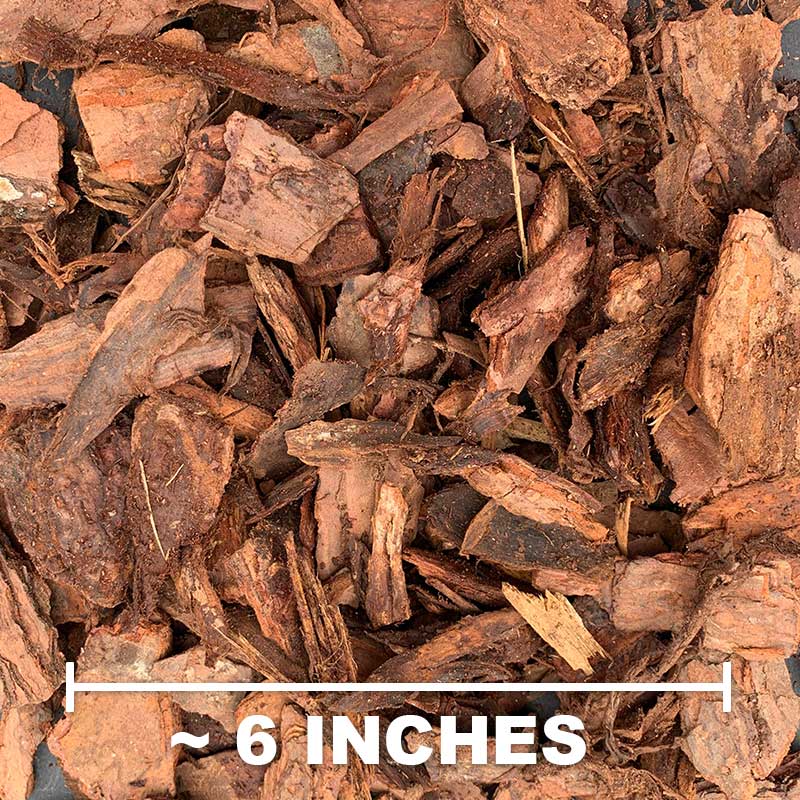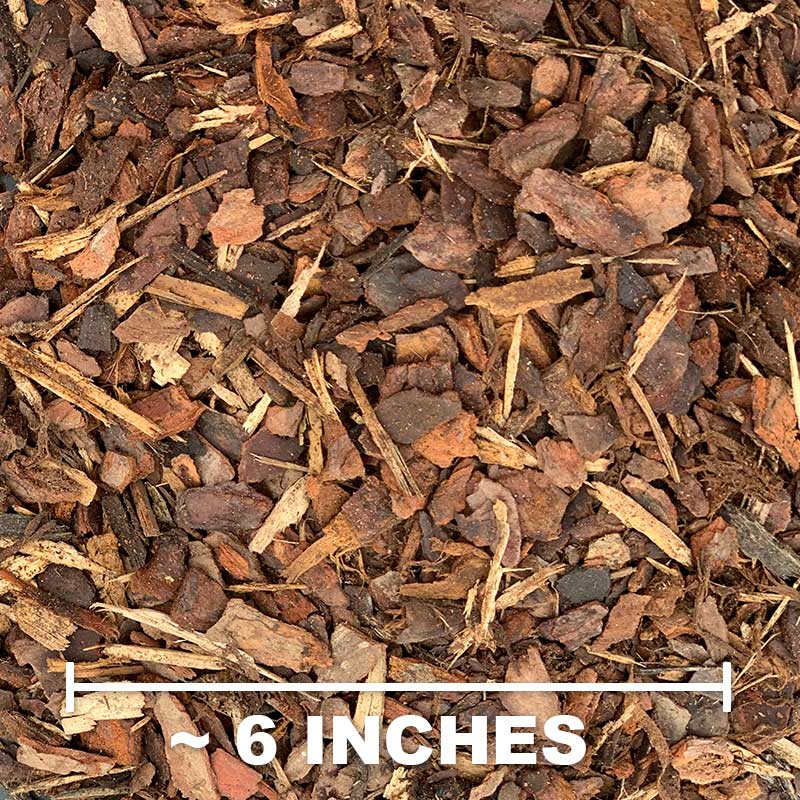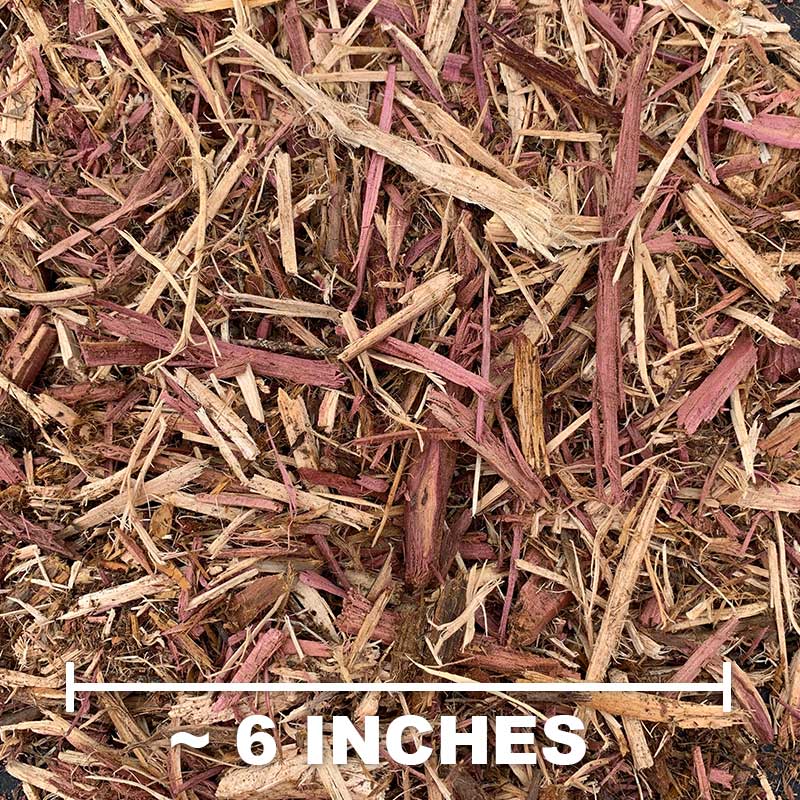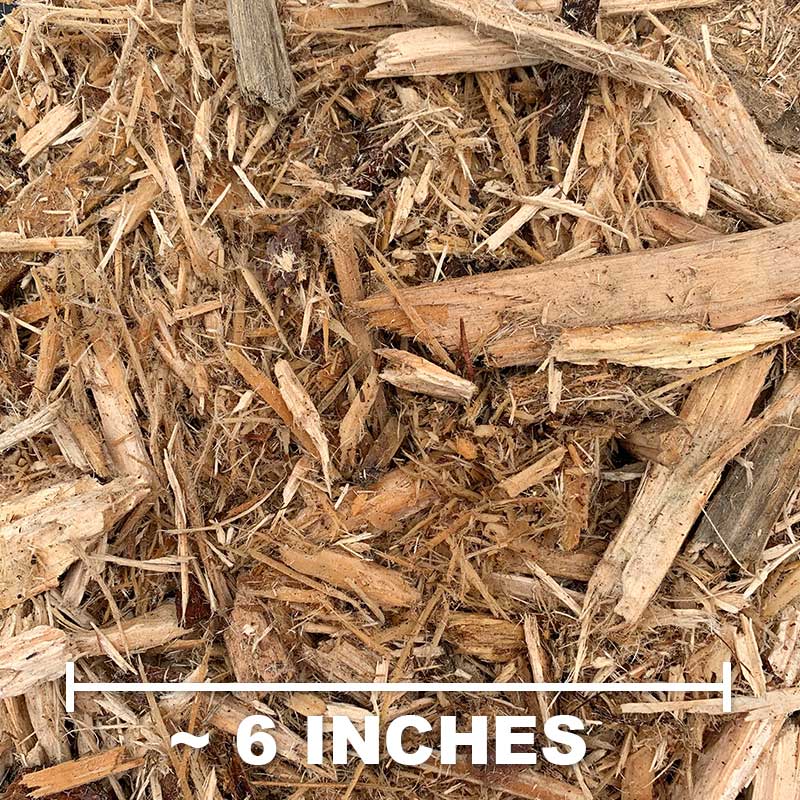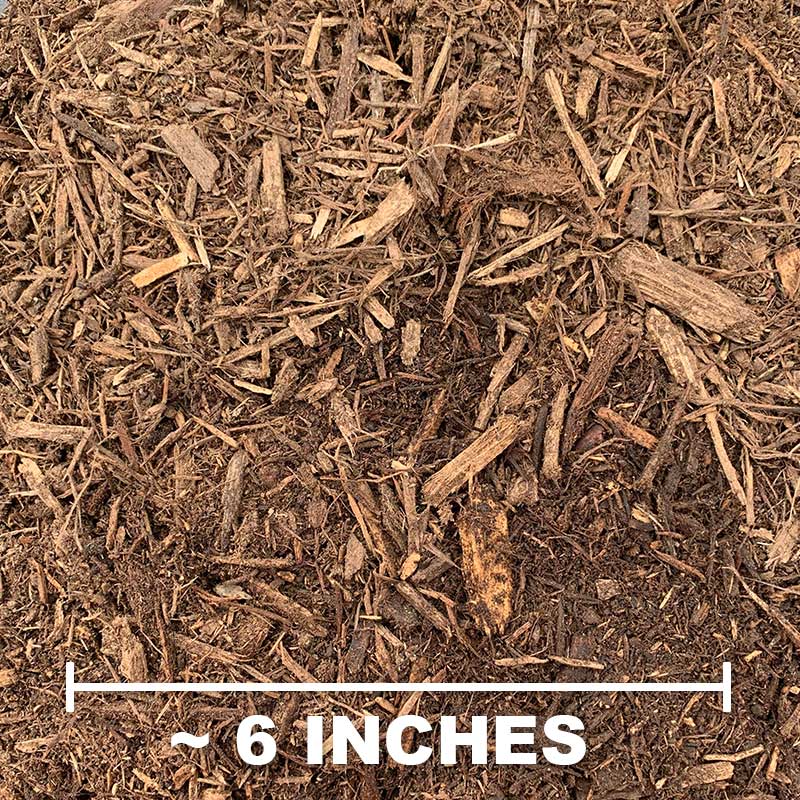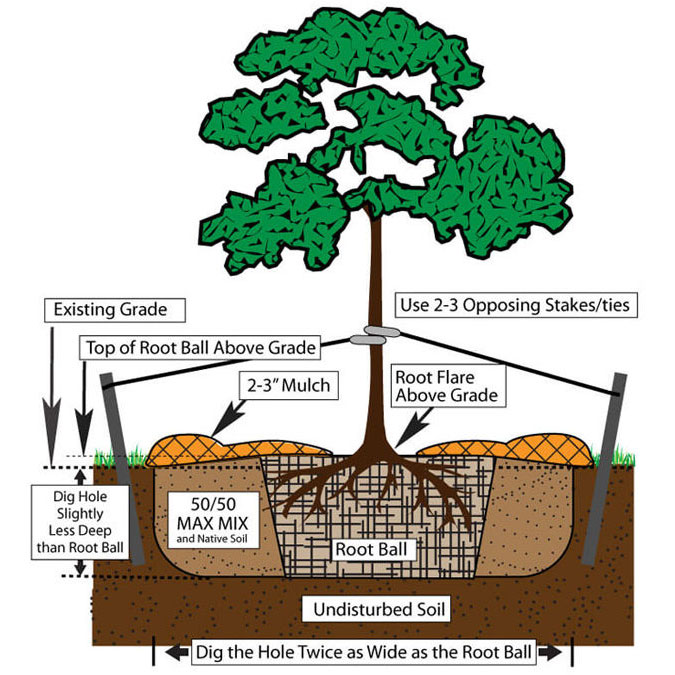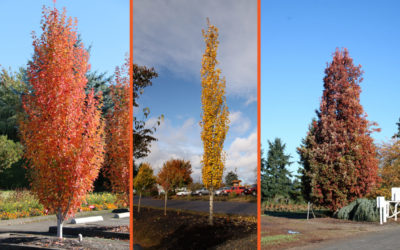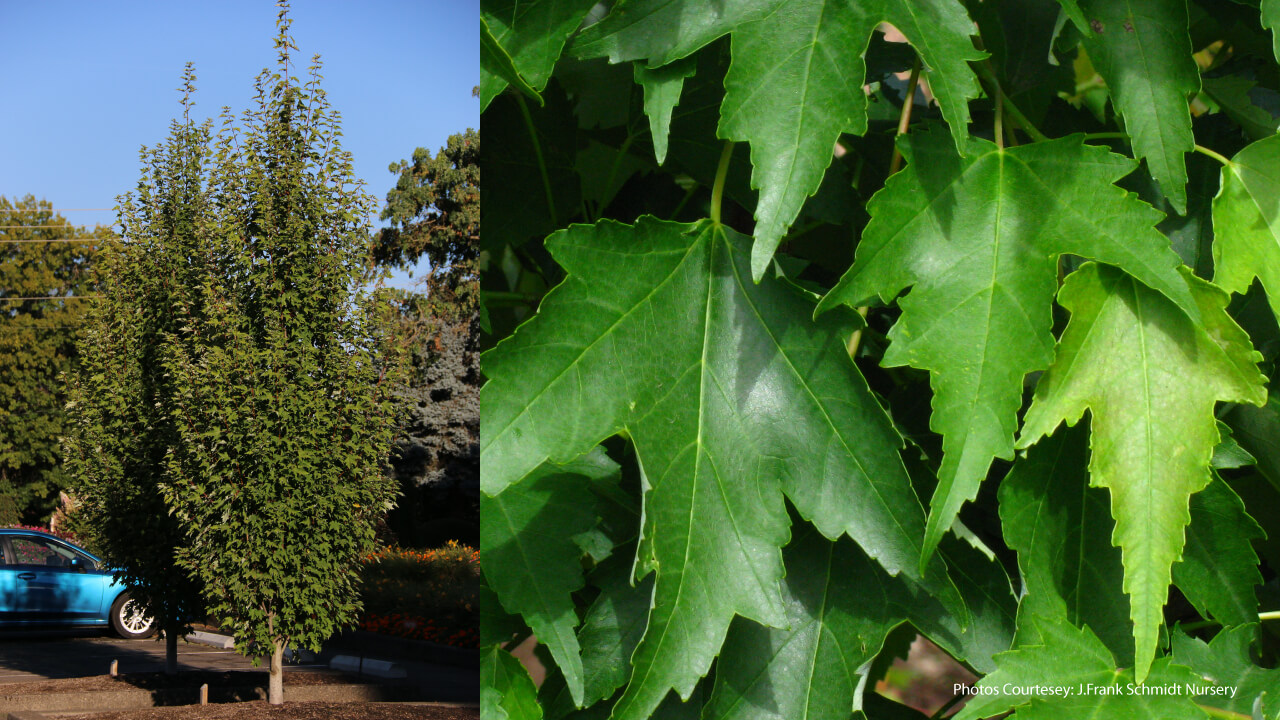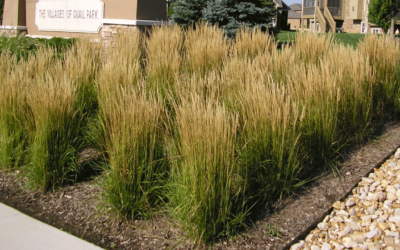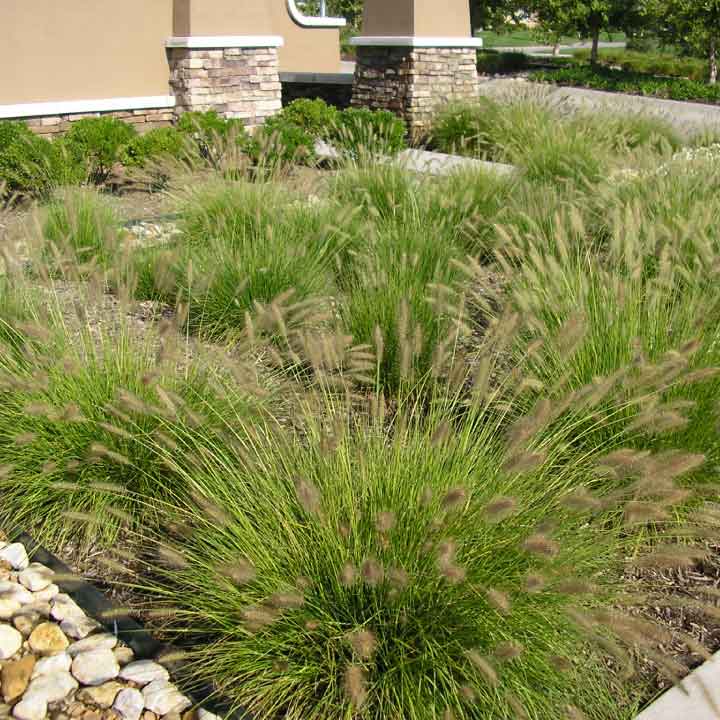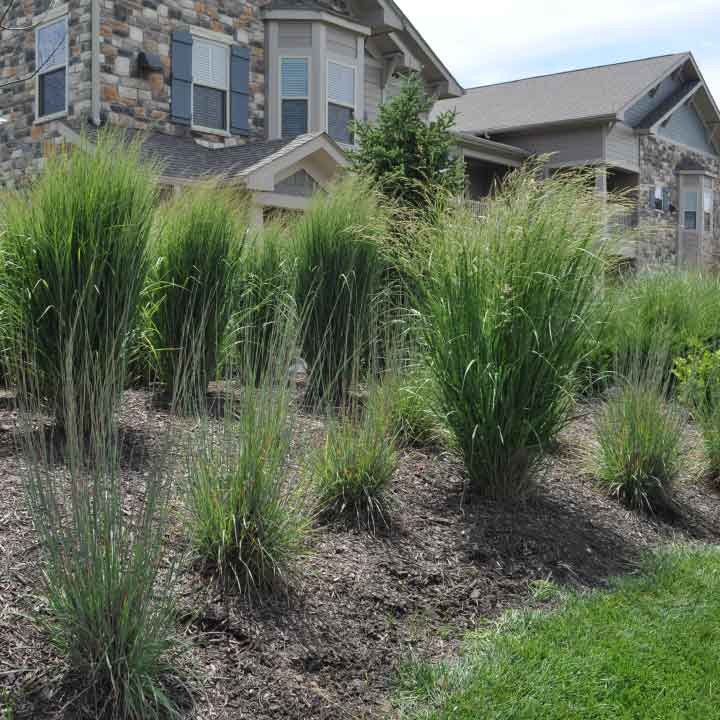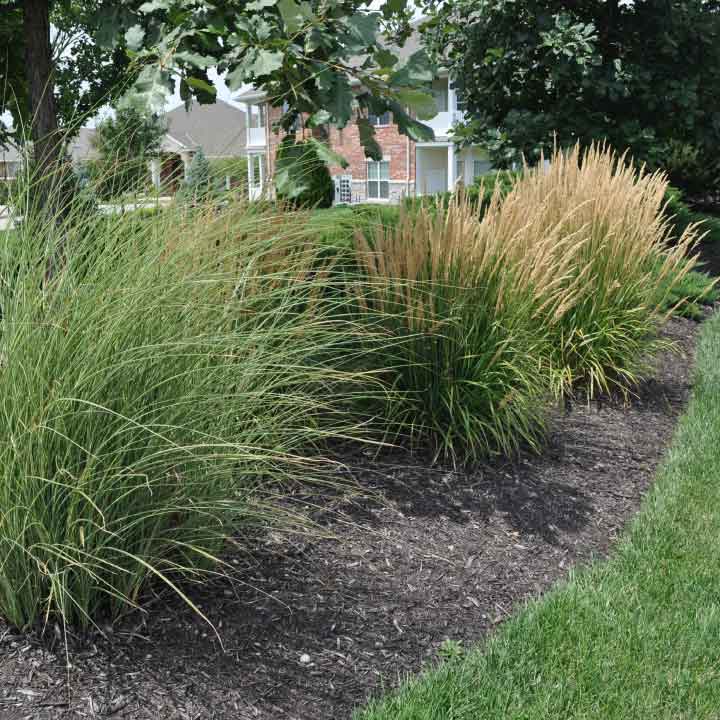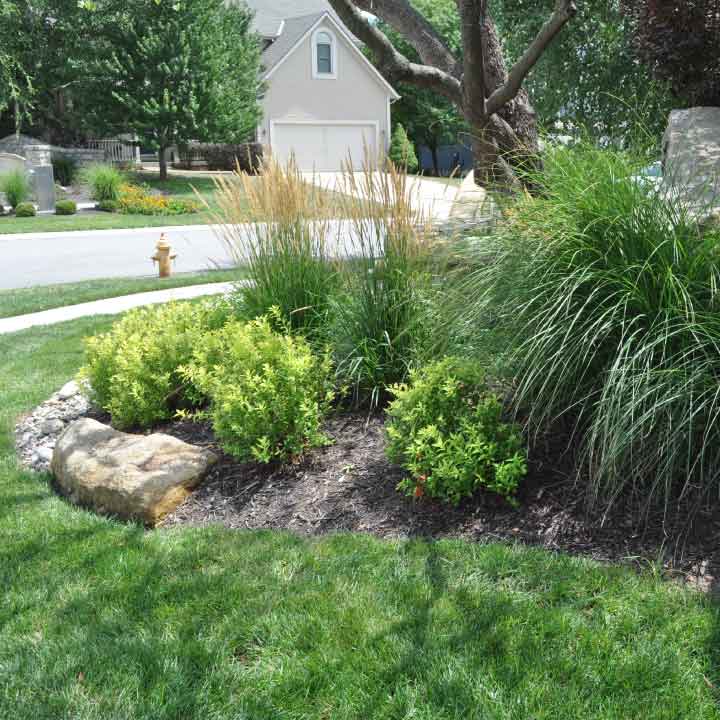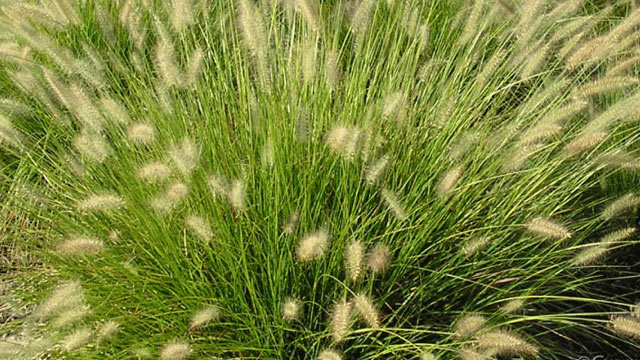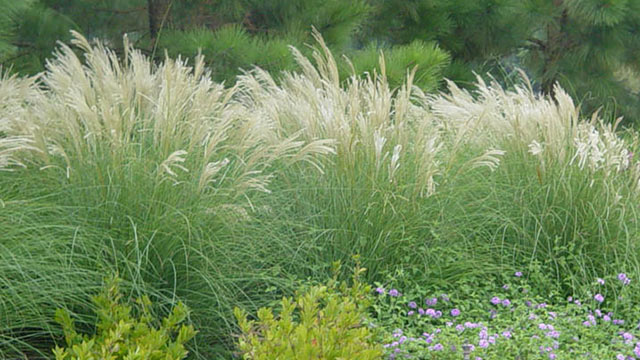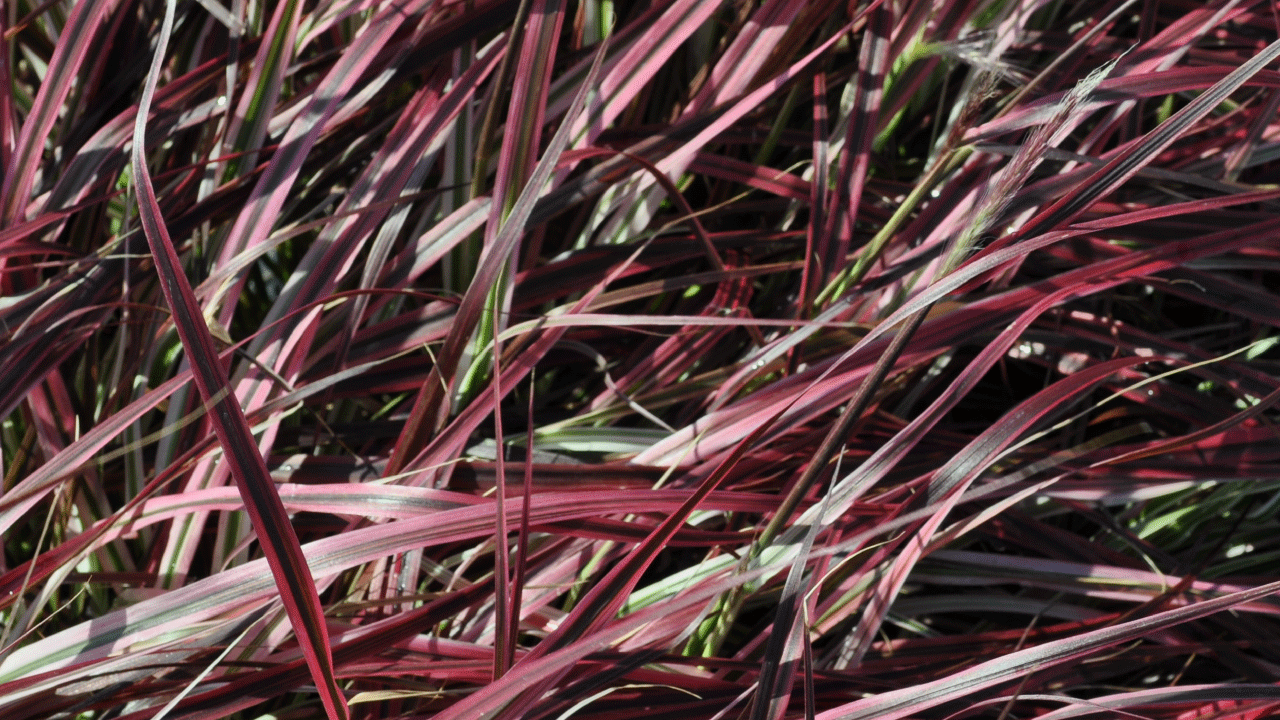Nursery
How to Care for Hardy Garden Mums
Hardy garden mums are iconic during the fall harvest season. Hundreds of cultivars of mums provide an array of colors and bloom shapes in the fall garden. Bloom colors will range from white, yellow, orange, bronze, red, pink, purple, and burgundy. In addition, garden mums come in many different flower shapes. Decoratives, Cushions, Daisies, Pompons, and Button style chrysanthemums are the most traditional.
What is a Hardy Garden Mum?
Hardy Chrysanthemums, also called garden mums, are popular plants that have been used in the gardens of China since before 550 B.C. Their blossoms brighten containers, landscape beds, and borders from mid-August through November with blooms that often last for many weeks. Today, hardy mums are a large part of the fall harvest season, along with asters, pumpkins, gourds, and straw bales. Garden mums are a great way to revive worn-out planters and bring color to any spot in the landscape.
Choosing a Garden Mum
When choosing garden mums, look for full, healthy plants that still have some tightly closed buds. This ensures you’ll get blooms for a more extended period. Additionally, mums do best and often look better when repotted out of their plastic nursery pot and into larger containers and landscapes.
Idiot-Proof Guide to Planting Garden Mums
- Choose a well-drained location where the mums will receive at least five hours of sun per day.
- Dig a hole twice as wide and only as deep as the container. Space blooming garden mums in the fall based on plant size.
- Remove from the container and place the mum into the hole onto undisturbed soil. The top of the root mass should be level with the soil grade. Mums growing in fiber pots can be planted without removing them from their containers.
- Backfill with a balanced mixture of Grass Pad’s Max Mix planting mix and native soil. Pack the soil mixture firmly around the root mass.
- Cover the planting area and the top of the root mass with the mulch of your choice.
- Water thoroughly at planting using a diluted solution of Uncle’s Root Accelerator.
- Water as needed; never let newly planted mums in bloom or buds dry out. The amount and frequency will vary by size, weather, and soil conditions.
- Fertilize with Uncle’s Root Accelerator every two weeks until buds crack open. Repeat monthly in the growing seasons.
Uncle’s tip: Avoid watering over the top of mum plants. A mum’s branches are brittle and easily broken. Large containers of mums contain multiple plants and should be watered from the side into the pot to prevent the individual plants from splitting apart.
Can Garden Mums Survive Winter?
Most folks treat them as annuals; however, garden mums are hardy from zones 5 to 9 and should be considered tender or half-hardy in cold zones. With the proper care, they can come back in most parts of Kansas and Missouri but may struggle to survive winters in Nebraska.
How to Keep Mums Coming Back
The best chance for fall planting success is to plant garden mums as early as possible and pick the tightly budded mums. If you plant them early in the fall and fertilize them routinely with Uncle’s Root Accelerator, they will have enough time to root before the ground freezes and survive the winter. However, Mother Nature and Old Man Winter can take their toll on the hardiest of plants, so there are never any guarantees that mums will survive the winter, but here are some tips to help you beat the odds.
Mum Care After Blooming
Cut your mums down to the ground after the blooms fade and the foliage dies back. This is typically in mid-December. Apply a 3-4 inch layer of mulch or Uncle’s Max Mix to protect the roots during the winter and prevent them from heaving from the soil during winter’s freeze and thaw cycle.
Uncle’s Tip: To assist in finding them in spring, mark the location of each individual plant with a Grass Pad marking flag.
Mum Care In The Spring
In late March, remove the mulch from the base of each plant to allow the sun to warm the soil and trigger new growth. Fertilize with Uncle’s Root Accelerator and continue to fertilize every four weeks through September. Mums that survive could be thin and unshaped. They will need to be pinched back regularly to keep them compact.
Pinching or Pruning Buds
Pinching back your garden mums the following spring season is critical to encourage branching and developing a compact plant habit. When new growth is four to six inches tall, use your thumbnail and index finger to remove or pinch off about ½ of the new growth. Do this at the top of every shoot. Repeat this procedure through the summer whenever new shoots are four to six inches long. Stop pinching around the Fourth of July.
How to Divide Mums and Make New Plants
Chrysanthemums sometimes become crowded in the garden. The old center portion of the plant dies back, and new growth occurs around the perimeter of the clump. Renovating chrysanthemum clumps every three or four years will encourage healthy growth, neat plant habit, and continued flowering.
When new shoots appear in the spring, dig the entire clump. Use a sharp spade or knife to cut the clump into wedge-shaped, pie-like sections. Remove and discard the point of the wedge (this is the oldest part of the clump). Plant the new plant (wedges) eighteen to twenty-four inches apart at the depth they were growing. Amending the soil the Uncle’s Max Mix and watering in with a diluted solution of Uncle’s Root Accelerator.
More Related Articles to Garden Mums
Uncle's Root Accelerator - Keeping Plants Healthy
- Uncle's Root Accelerator gives plants a healthy start. Learn More at this Link
Uncle's Max Mix - The Secret is in the Soil
- Uncle's Max Mix is a premium-grade horticultural planting mix. Learn More at this Link
Grass Pad's Seasonal Flower Markets
- Available in season, Grass Pad has a large selection of annual and perennial flowers. Learn More at this Link
Flower Pots Available at Grass Pad
- We inventory many different sizes and quality of glazed and decorative pots from around the world. Learn More at this Link
Snowflake Pansies for early Spring and Fall
- Have fun with pansies and use them everywhere. Learn More at this Link
Grass Pad Flower Market and Garden Center
This is Uncle Nature’s favorite time of year! Taxes are done, robins are singing and it’s time to paint up the landscape. A flat of annual flowers costs less than a gallon of paint and will give you bright colors all summer long.
Seasonal flowers arrive daily during the peak spring season. Grass Pad Flower and Garden Centers continually re-stock the freshest and highest quality flowering annuals, hanging basket, combination planters, garden vegetables and perennials. We take pride in maintaining our plants, keeping them healthy to ensure you go home with the best plants. We care about our customers and the quality of our fresh flowers. If you are a beginning gardener and need suggestions, we have plenty of helpful staff available in our nurseries. At the Grass Pad, we have the reputation for having the most knowledgeable staff with the best customer service in the Midwest. If you are the experienced gardener or landscaper, bring us your wish list or give us a call for availability.
Note: Grass Pad Flower and Garden Center inventory will change day to day based on the season, weather and market conditions. Each spring season, Grass Pad Flower and Garden Centers fill our tables and racks with thousands of flats of annual and perennial flowers available for retail and wholesale purchases.
When picking out flowers for your garden or your containers, all the selection can be a little overwhelming! Below is a quick guide of the best way to create planters, and what types of flowers you can find at all Grass Pad locations.
Planting in Pots and Planters
Pots and planters are a great way to decorate the porch and patio in spring. They provide design solutions to problem areas and enhance a garden setting. Containers can emphasize entrances to homes, the garden and can be used to screen unsightly views or soften the edge of a bordering lawn.
Uncle says to use three easy steps will create a basic framework for any pot, basket, or container – the Thriller, the Filler, and the Spiller.
The Thriller: Use plants that make a big impact with height and structure to your container. Dracaena spikes, Zonal Geraniums, tropical cordyline, or Blue Arrow Juncus add thrill. Purple fountain grass or Angelonia work well. Perennials such as liatris or coneflower can be used.
The Filler: Use flowering or foliage plants to fill out the body of your container. Choose complimentary colors of pastels or bold colors. Select plants that will grow at similar rates so one plant does not overrun another. Try Sun Patiens, Sun Coleus, or New Guinea Impatiens, to name just a few.
The Spiller: Trailing varieties that spill and cascade over the side of your container soften the edges of your planter and add the finishing touch. For foliage try ivies, licorice plant or vinca vine. Add color with bacopa, trailing verbena, trailing calilbrachoa, scaevola or torenia.
Annual Flowers for the Garden or Containers
Annual flowers are flowers that are planted every year, and generally have the brightest and most vibrant colors. Some annual flowers you might be familiar with include pansies, snapdragons, petunias, geraniums and many more. Annuals are perfect for:
- Creating color and interest in pots, planters, and garden beds
- Finishing off landscape borders and boundaries with a punch of color
- Using as a companion to your vegetable garden
- Supplementing a flower cutting garden
Perennials for the Landscape or Container Gardening
Perennials are plants that come back year after year if properly cared for, and so only need to be planted once if you’re planting them straight into the ground. If you’re using them for planters or pots, you can transplant the perennials to your garden in the fall to enjoy again next year. Perennials are perfect for:
- Creating season-long color
- Attracting pollinators to your yard and landscape
- Creating a season-long cutting garden
Like annuals, perennials can be planted in both containers and in the landscape. However, if you plant perennials in containers, you’ll have to take special care of them to ensure they survive the winter. Common and popular examples of perennials include daisies, coneflower, catmint, salvia and many more.
Plants for the Sun and Plants for the Shade
One of the first questions we’ll ask you when you come shopping for flowers at the Grass Pad is, “Sun or shade?” Most plants prefer one or the other, and choosing the plants based on the sun exposure is a sure way to get the best-looking garden on the block. Here are a few examples of flowers that work well in each location:
Uncle’s Tip: The closer together, the better they look! Annuals planted too far apart take all season to grow together in the bed. Plants 4” to 6” apart fill in quickly and will make you a hero.
Uncle’s Favorite Shade Annuals:
Alyssum, Green Leaf Begonia, Coleus, Impatiens, Lobelia, Pansy and Violas.
Flower Pots for Sale at the Grass Pad
Plant Pots at the Grass Pad
Whether you need a small pot for a window sill, or want to have a large container garden on your patio, the Grass Pad has what you need! Not only do we have many different sizes of pottery, our pottery comes from a variety of locations, from Vietnam to Germany. Each pot has its pros and cons – some are durable and more expensive, others are cost effective but not as weather tolerant. We’ve broken them out below by country of origin and provided some details so you can find the perfect pot for your needs!
Vietnamese Pottery – Uncle’s Pick
Vietnamese pottery is the highest quality pottery that we sell at the Grass Pad. The clay the pots are made from is very strong and winter proof, making them a great choice if you don’t want to lug big pots around before the cold months. Vietnamese pots come in very large sizes, making them excellent statement pieces. Generally not mass-produced, the pottery you’re buying has a one of a kind look and there will be more variation in color even within the same set. As the pottery is made from dense clay, some of the pots can be heavy. If you’re looking for high quality pots, unique designs and the ability to leave them outside during the winter, look no further than Vietnamese pottery.
Malaysian Pottery
Moderate sizes, styles and colors are a hallmark of the Malaysian pottery. These pieces generally have more of a uniform appearance and less of a hand made look. They are great for expanding your collection especially for smaller plants you want to bring inside.
Chinese Pottery
Chinese Pottery offers a lot of variety both in size and glaze colors. Flashy colors with “drip” glazes are available in this category. You can select from everything from large statement pieces to window-sill size containers. While some of the clay may be able to handle winters outside, we feel our customers are safer protecting their investment by enjoying these planters indoors during the winter months.
German Pottery
The planters we see from Germany are fun, ultra bright colors. This is achieved with an epoxy coating that is especially durable when protected freezing. These great colors make it a great welcome sign on porches and decks. Matching saucers are available when you are ready to bring these indoors.
Pot Feet and Saucers
Plants don’t like to have wet feet and neither do pots. Pot feet are designed to lift pots off the ground or deck to allow better drainage. They also allow for air flow beneath the planter so your deck can dry out and won’t get the “ring”. Not having standing water beneath the pot, preventing a mosquito hatchery from forming.
How to Winter Planters Outside
Planters left outside can get a helping hand from their human friends by ensuring good drainage. Avoiding water build-up inside the pot that can expand when freezing is a must. When initially planting the container, Grass Pad recommends the bottom 1/3 of the planter be drainage material. The easiest to use is lava rock for its light weight and air space. Water has a place to go.
Best Hydrangeas for Shade and Sun
Why Do Hydrangea Flowers Change Color?
One of the most exciting habits of some hydrangeas is the ability of the flowers to change color. This is not true of all hydrangeas, but most often seen in the mophead and lacecap (or mountain) cultivars of hydrangea macrophylla.
Those hydrangea with blue or pink flowers tend to be blue in acid soil conditions and pink in alkaline conditions. To get the best flower color, choose cultivars that give the best colors for the pH in question. White flowers will remain white regardless of soil pH as well as varieties with deep red blooms such as the Cityline ‘Paris’. Hydrangeas with blue flowers can be kept blue by growing the plants in acidic soil, or by acidifying soils. In soils where hydrangeas are not reliably blue, add aluminum sulfate. If the soil is very alkaline, this treatment may not work but can be very useful for container-grown plants. Use rainwater to water hydrangeas, since hard water can affect the flower color, turning blue flowers pink. Boost red or pink flowers, by applying granular lime in winter
How to Change Hydrangea Flower Color?
In pink and blue mophead-type hydrangea, the flower color is dependent on the pH balance of your soil and the presence (or lack of) aluminum: you’ll have clear pink blooms in alkaline soils and blue flowers in acidic soils. To obtain a blue hydrangea, aluminum must be present in the soil. To ensure that aluminum is present, aluminum sulfate may be added to the soil around the hydrangea a solution of 1 tablespoon of aluminum sulfate per gallon of water to be applied to the plant throughout the growing season. Important: Water your plants well in advance of application and put solution on cautiously, as too much can burn the roots. Another method for lowering the pH of the soil is to add large amounts of organic matter such as Uncle’s Max Mix to the soil when planting. For hydrangea blooms to be pink, the plants must not take up aluminum from the soil, if the soil naturally contains aluminum, one must try to keep it away from the hydrangea’s system. Add lime several times a year. This will help to raise the pH. Since hydrangeas take up aluminum best at lower pH levels, raising the pH will help to keep the bluing effect of aluminum out of the hydrangeas system.
What Are Reblooming Hydrangea?
Reblooming hydrangeas give an advantage to gardeners in cold climates to enjoy hydrangea blooms despite cold winters. Reblooming hydrangeas have a unique ability to set buds on both new wood growth in spring and old wood in fall. If flower buds are damaged by winter weather, and damage is not too severe, the plant can produce flowers on new growth. Reblooming hydrangea varieties include the Endless Summer®, Bloom Struck, and Let’s Dance. These mophead and lacecap varieties, such as Twist and Shout®, Tuff Stuff™, and Tiny Tuff Stuff™ hydrangeas, will bloom with little attention. Still, regular pruning encourages new growth that can produce a better display.
Where to Plant Macrophylla Hydrangeas?
The flower mops range from four to six inches in garden conditions, and up to eight inches when planted in containers. Foliage is a medium-to-deep green, and has shown good mildew resistance. The plant grows three to five feet in width and height. It is partial to sun, enjoys a rich soil, and requires abundant water.
Because of their size and dense foliage, hydrangeas are treasured as shrubs and border plants. They can be used to define boundaries, create a planting “area,” or provide a backdrop for other flowering plants in your landscape. These big leaf hydrangeas thrive in moist but well-drained soil, preferring morning sun. Avoid planting macrophylla hydrangea (mophead and lacecap types) in dry, with full sun exposed areas, or unprotected areas where extreme cold winds may damage young spring growth.
Can I Plant Hydrangeas in the Sun?
Uncle’s Idiot Proof hydrangeas are the panicle and arborescence (smooth) type hydrangea. These types are sun-lovers. While they prefer the sun, these hydrangeas will do just fine in partial shade, too. Both panicle and smooth hydrangeas, such as the white Annebelle, the Incrediball® and the red Invincebelle Ruby® hydrangea bloom late in summer on new wood. Unlike their famous shade-loving cousins, the macrophylla, or mop head hydrangea, which bloom on old wood. Hydrangea quercifolia, also known as Oakleaf hydrangeas, such as Alice and Ruby Slipper, are sun-loving hydrangea that flower on old wood growth.
New Hydrangea Varieties
In the last few years, breeders have been developing many excellent varieties along with introducing new colors with bright whites, creams, lime green, and various shades of pink. Some of our most popular panicle hydrangeas are the Bobo, Quick Fire, and Limelight. Limelight, with its huge football-shaped flowers, has almost revolutionized landscaping across America. Opening into light green, the blooms age to a bouquet of pink, red, and burgundy persisting through frost. Breeders have recently introduced a sibling Little Limelight growing three to five feet tall and wide. Proven Winner’s panicle hydrangea collection includes Quick Fire and a dwarf version Little Quick Fire. One of the first hydrangeas to bloom, the Quick Fire bloom emerges bright white and as blooms age; they change color to pink and finally red, giving the plant a multicolored effect in late summer and early fall.
Why Won’t My Hydrangea Bloom?
Hydrangea failing to bloom is a common dilemma for many of the older varieties of macrophylla and oakleaf hydrangeas. An unseasonable hard freeze or an improper pruning is typically the cause. These hydrangea types bloom on old wood. Winters with extreme freezing temperatures can injure unprotected flower buds. A pre-winter routine to protect these big leaf hydrangea blooms is to pile fallen tree leaves over the top of the plant for winter bud protection. Pruning out of season, too late in winter or too early in spring, will result in cutting off flower buds formed the previous season.
When to Prune a Hydrangea?
Panicle and arborescence hydrangea are the perfect idiot-proof hydrangeas. Blooming late in summer on new wood, they require no special mulching or pruning techniques to see blooms the next year. If you forget to prune a paniculata hydrangea the previous season, no worries, shape them up during the winter thaw or the following spring.
The same is not valid for its cousins, the macrophylla hydrangeas. Mophead, lace-cap and oakleaf varieties of hydrangea bloom on old wood and should be pruned soon after blooms fade in late summer to early fall.
When to prune Endless Summer Hydrangea?
Endless Summer hydrangea needs very little pruning through the seasons. However, early spring is a good time if you must shape them. Wait to cut until you see new growth on the stem. Endless Summer blooms on old and new wood. Be careful not to prune off any early-season blooms. If the buds and branches are brown and crunchy, you can remove those, but leave any that are green and soft.
What Is the Best Way to Plant Hydrangea?
When planting a hydrangea, use a balanced blend of Uncle’s Max Mix, mixed with native soil as backfill. Add organic matter after planting by using Uncle’s Black Magic peat compost as a top dressing. Consider using pine bark mulch to help soil acidity for mophead varieties.
Fertilize hydrangeas with Uncle’s Root Accelerator, low nitrogen plant starter, at planting. Avoid feeding too often, with high nitrogen fertilizers, which can encourage excessive leaf growth, with plants less likely to develop flower buds and more at risk from winter damage.
More Related Articles to Hydrangeas:
Uncle’s Root Accelerator – Keeping Plants Healthy
- Uncle’s Root Accelerator gives plants a healthy start. Learn More at this Link
Uncle’s Max Mix – The Secret is in the Soil
- Uncle’s Max Mix is a premium-grade horticultural planting mix. Learn More at this Link
Grass Pad Nursery Stock
- Search Idiot-Proof plant selections available at Grass Pad. Learn more at this link.
How to Fertilize for Healthy Trees and Shrubs
- Tips for fertilizing new and existing shrubs in landscapes. Learn more at this link.
Guide to Planting Trees and Shrubs
- How to plant trees and shrubs for best results. Learn more at this link.
Cold Snaps Are a Part of Spring
How To Protect Plants Against Cold Spring Weather
It’s the same thing every spring, a few warm days in March has everyone in the mood to get out of their winter doldrums. Our customers are happy to get out of the house and get into the yard. Clean out the garden bed, prune the shrubs, mow the lawn and rake leaves.
Then like a kick in your shorts, a late freeze comes along. Now everyone is stressed about all those pansies they just planted or the daffodils in bloom. An early spring freeze is nothing new for our region. Just one of those reminders, it’s not spring ‘til Mother Nature says it’s spring. Here are some things that can help ease your stress.
Established Wood Shrubs and Perennial Care
Don’t lose sleep over established woody shrubs or perennials. Some things you just can’t control. Mother Nature always has a way of looking after her own. Established plants will have stored energy to grow a second generation of leaves.
Should I Cover My Flowers?
Covering your flowering plants with a cloth or blanket can give an extra 4 to 5 degree difference. It doesn’t sound like much, but it is a big difference. If you choose to cover your plants, make sure the entire plant is covered and DO NOT USE PLASTIC. Be careful not to overweight any limbs and branches. If you are not careful, more damage can be done from covering them, than the freezing temperature.
Why not plastic?
Never use plastic of any kind, including black plastic garbage bags, to cover plants, as plastic conducts cold to the leaves and will increase the likelihood of damage to the plant. Old sheets, blankets, drop cloths and special frost protection blankets work best.
What About my Perennials?
Hardy and well-established perennials such as daffodils, tulips, daylily, and iris can usually handle overnight dips nearing the mid 20°s with minimal damage. However, sustained cold temperatures, especially nearer the teens, can cause injury. Most of the time, this would result in cellular wall damage. If the plant was mature and well established; the plant will typically produce new shoots and grow out of it. They may be a little sluggish to perform at first, but a monthly application of Root Accelerator should help them reestablish.
Peony and hosta have tender new foliage, and it may be best to push mulch up around the sides and base of the plant to give support and cover them with a frost blanket or cloth sheet (NEVER USE PLASTIC). Another trick my Mother used was to set clay garden pots and 5-gallon buckets upside down over the plant. Be careful not to let the plants touch the sides of a plastic container.

What About My Annuals & Vegetables?
If you have pansies in the garden or in a container, chances are they look amazing. Cold weather snaps of short duration should not have any affect on the pansies. Annuals that are more sensitive to the cold and should have protection or brought inside are zinnia, vinca, and sweet potato vine. Cold hardy vegetables such as broccoli, cabbage, cauliflower and most lettuce should be fine in temporary freezing temperatures. Tomatoes and peppers are more sensitive to cold snaps and may need protection.
Expect the Worst, Hope for the Best
The real damage won’t be realized for several days. If signs of damaged tissue appear, fertilizer will be needed to replace expended food storage. The supply of stored energy is limited and will take time and supplemental nutrients to replace.
Fertilize Flower Beds and New Trees
This will help them begin the process of replenishing depleted energy reserves. In two weeks remove dead and black tips that show no sign of new growth. A positive side is we have plenty of time for new growth to return. The loss of fruit may be a good thing for certain crabapples and Sweet Gum trees.
Spring Blooming Azaleas and Rhododendron
Each April, spectators around the globe would watch the most famous major championship in professional golf. We would stare in amazement at the pristine greens and manicured fairways of the iconic American golf course located in Augusta Georgia. On Sunday, the accolades would go to the champion along with his green jacket, but the real winner of the tournament was always Mother Nature and her green thumb. Mother Nature with her azaleas, rhododendron, and dogwood lining the course in full spring splendor. Every green and fairway beautifully carved from the Georgian hill country designed to add color and texture to a stunning backdrop. If you’ve never witnessed the glory of hole 13, Azalea, it’s worth watching just for its beauty and elegance. The 13th hole has an estimated 1,600 azalea bushes.
Where Can I Plant Azaleas?
Looking to add flower color and an oriental flavor to your shady spot? Azaleas and Rhododendron are just the thing. Often underappreciated, azaleas will make your backyard a masterpiece in brilliant colors. Spring flowering, azaleas are shade-loving evergreen shrubs that will do well in many mid-west landscapes. Best as foundation plantings on the north or east sides of the home or under any shade canopy.
What Are the Best Mid-West Performing Azaleas?
Best performing azaleas varieties for the mid-west include the Herbert, Karen, and Hot-Shot. These compact evergreen azaleas will reach a mature height of 3-4 feet under ideal conditions. The Yedonese or Poukhanense Compact Korean azaleas with its purple flowers and evergreen leaf can reach five feet tall.
When Do Azaleas and Rhododendron Bloom?
Most azaleas bloom for a few weeks in early spring. Many new re-blooming varieties of azaleas have been popular in the last few years. Proven Winners latest Bloom-A-Thon Double Pink, Lavender, and Red azaleas are establishing themselves as one of the most outstanding re-bloomers. Blooming in spring, with sporadic summer flowers and then a massive re-blooming in early fall.
What Are the Best Performing Rhododendrons?
Best performing rhododendron varieties include the PJM Elite, Lee’s Dark Purple, Nova Zembla and Roseum Elegans. The PJM rhododendron is a smaller leafed variety that shows a purple flower in the spring and deep mahogany-purple leaf color through the winter months. The PJM has smaller blossoms, lower growth profile and is extremely winter hardy. The intials PJM stand for Peter J. Mezitt who was a pioneer in cross breeding rhododendron cultivars.
Caring for Azaleas and Rhododendron
Just like Uncle, azaleas and rhododendrons are acid lovers. Azaleas and rhododendron prefer well-drained soil. When planting, amend your soil with Max Mix, a blended natural compost to improve drainage and acidity in the soil. In areas, with poor drainage, a raised bed may be needed. Mulch with pine bark mulch, a naturally acidic mulch. Fertilize with Uncle’s Green Love, organic fertilizer, to give them the iron they need. Keep a soil test kit handy to check your soil’s acidity, and with a little extra effort up front, you can bring color and class to your shady spot.
More Related Articles to Azaleas & Rhododendron:
Uncle’s Root Accelerator – Keeping Plants Healthy
- Uncle’s Root Accelerator gives plants a healthy start. Learn More at this Link
Uncle’s Max Mix – The Secret is in the Soil
- Uncle’s Max Mix is a premium-grade horticultural planting mix. Learn More at this Link
Grass Pad Nursery Stock
- Search Idiot-Proof plant selections available at Grass Pad. Learn more at this link.
How to Fertilize for Healthy Trees and Shrubs
- Tips for fertilizing new and existing shrubs in landscapes. Learn more at this link.
Guide to Planting Trees and Shrubs
- How to plant trees and shrubs for best results. Learn more at this link.
Best Magnolia Trees to Plant in the Midwest
Magnolia Trees are Idiot-Proof Plants
Magnolia trees are among the hardiest and long-lived ornamental trees in the midwest. Incidentally, magnolias are low-maintenance and require no pruning. Also, magnolias do not drop obnoxious seeds and have no serious insect or disease issues. Adored for their spectacular spring flowers and sweet fragrances, magnolias in the landscape can be utilized as a specimen for a featured focal point or used as accent shrubs and make effective living fences. Ranging in colors from white, pink, purple, and even yellow. Heights range from ten to fifty feet. Types of magnolias include elegant evergreen with glossy foliage to deciduous shrub types. Having such a wide selection of varieties of magnolias available, there will likely be a magnolia to fit any sunny spot you may have available.
Royal Star Magnolia
(Magnolia Stellata)
The Royal Star magnolia blooms early in spring. Large, fragrant, white, double flowers appear before the foliage emerges. A springtime show that will add a beautiful touch to landscapes as the seasons progress.
‘Jane’ Magnolia
(Magnolia liliflora’Reflorescens’ x stellate ‘Waterlilly’)
Jane Magnolia is deciduous and drops its leaves in winter. ‘Jane’ magnolia is a hybrid cross of Magnolia lillifora and Magnolia Stellata. This combination creates a compact habit with beautiful reddish-purple flowers. Occasionally reblooming in mid-summer.
Saucer Magnolia
(Magnolia x soulangiana)
The Saucer Magnolia is our most popular magnolia. Growing to a height up to 25 feet tall. Large pink-to-white flowers bloom from its low-hanging branches in early spring. Flowers resemble an upside-down tulips and are often confused for the Tulip tree (Liriodendron tulipifera).
‘Genie’ Magnolia
(Magnolia soulangeana x lilifora ‘Genie’)
‘Genie’ Magnolia also blooms in early spring. Bursting with beautiful blackish-red tulip-shaped flowers with a light scent. They are often followed by a second round of color in Mid-Summer. ‘Genie’ Magnolia grows upright, forming a tall shrub or compact tree. The ‘Genie’ magnolia has an average height of ten to twelve feet.
Sweet Bay Magnolia
(Magnolia virginiana)
The Sweet Bay Magnolia is an upright-growing semi-evergreen. Keeping some of its leaves through most of the winter. Their long oval leaf is glossy green on top and has a silvery underside. Their creamy white flowers measure two to three inches in diameter. Interestingly, they open in the morning and close overnight. The Sweet Bay bloom during summer, intermittently until the first frost.
Bracken’s Brown Beauty
(Magnolia grandiflora ‘Bracken’s Brown Beauty’)
Bracken’s Brown Beauty is your best choice if you love the elegant look of the old south. Bracken’s Brown Beauty has a dark green glossy leaf with a fuzzy red-brown underside. Blooming in late spring and then sporadically through summer. Large creamy white flowers eight-inch-in-diameter. Fowers open with a citrusy perfume fragrance, eventually forming a cone. The cone ripens fall and winter to bright red seeds.
More related articles to Magnolias
Guide to Planting Trees and Shrubs
- How to plant trees and shrubs for best results. Learn more at this link.
How to Fertilize for Healthy Trees and Shrubs
- Tips for fertilizing new and existing shrubs in your lawn or landscape. Learn more at this link.
Azaleas make the Ultimate Spring Flower Show.
- Azaleas are the showstoppers of spring color in the landscape. Learn more at this link.
- Search Idiot-Proof plant selections available at Grass Pad. Learn more at this link.
Bare Root Gardening
Bare Root Plant Stock
Landscape plants of all kinds, including flowering shrubs, English garden Hosta, bleeding heart, lily of the valley, and dozens more start out their lives in the nursery as bare root plant stock. These unattractive plants, roots, and bulbs are then potted and grown until they become the beautiful full-grown plants sold in landscape nurseries and garden centers. Like the ugly duckling at birth, they transform into a white swan.
Save Money Planting Bare Root
Planting this nursery root-stock now can save fifty to eighty per-cent over mature plants purchased later in May. Likewise, plant material purchased locally is more substantial and of a higher grade than dried out catalog starters obtained by the internet. If you find a picture you like in an online garden catalog, save it to your phone and bring it to the Grass Pad. We probably have it and can tell you if it will do well in your area.
Spring Flowering Bulbs and Tubers
Lily of the valley, bleeding hearts, and astilbe all do well in mixed shade and start from the root stock. Tropical caladiums bulbs and elephant ears also prefer a sheltered spot and will multiply in warm moist soil. The beautiful Belladonna or Naked Lady may be purchased now as a bulb at significant cost savings. A rainbow of flowering plants: daylilies, gladiolas, and dahlias may be planted now and will bloom this year.
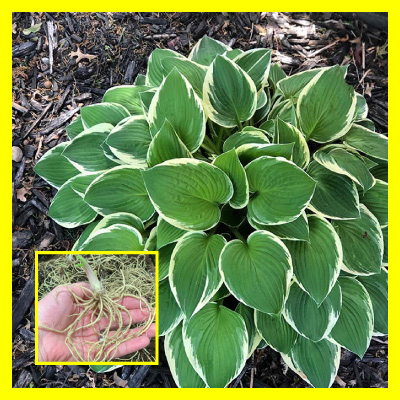
Bare Root Hosta
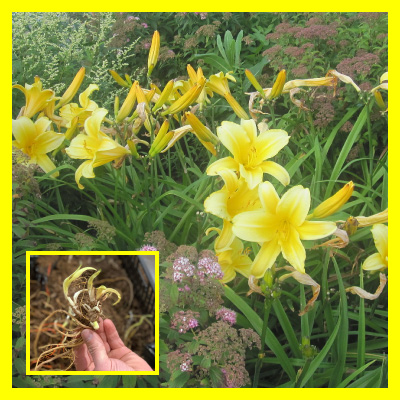
Bare Root Daylily
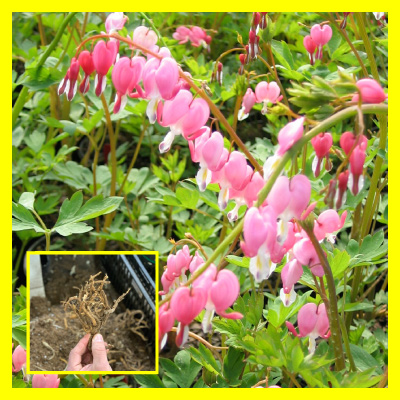
Bare Root Dicentra
Idiot Proof Bare Root Hosta
English garden hosta lilies are as close to “Idiot Proof” as a plant can get. These tufted leafy plants are grown for both their distinctive foliage and seasonal flowers. Their foliage will vary from deep green to bright yellow, as well as dozens of various combinations in between and vary between 2 inches to 4 feet tall . Their leaves may be large, small, radial, or oval.
For our climate, Hostas grow best in the shade, although some cultivars will tolerate partial sun, such as the yellow-foliaged varieties. All hostas bloom in the summer with spikes of lavender-to-white, lily-like flowers which can be quite showy. Hostas prefer well-drained soils and once established are drought tolerant, but prefer regular moisture for best appearance and size.
How to Plant Bare Root Hostas
Before planting the hostas, place the roots in water which has been spiked with Uncle’s Root Accelerator. The bare roots should soak for 30 minutes in the solution. This will make the roots more pliable and give an added boost to growth. When making a new hosta bed, cultivate to a depth of 10 inches. Apply six inches of organic matter like Max Mix or Sphagnum Peat Moss and till the ammendments into the bed. Dig the planting hole and form a small cone in the bottom of the hole and spread the roots over it. Make sure the crown is at soil level (do not bury the crown) and add the amended soil. Water the plants well after planting.
Idiot Proof Planting Kit
An “Idiot Proof,” bare root planting kit, includes Max Mix Grass Pad’s professional landscape mix or sphagnum peat. These should be worked into the soil to a depth of six to eight inches. Follow this with Uncle’s Root Accelerator once at planting and again at thirty-day intervals. Also, organic Zoom, poultry manure compost, is an excellent nutrient source for new annuals and established perennials.
At midsummer, potted nursery plants will cost as much as twenty dollars. The Grass Pad has a terrific selection of bare root plants that can be quickly established and represent a real value.
See Related: What is Uncle’s Root Accelerator?
Upright Evergreens for Living Fences
Use these Evergreens for Living Fences
Planting a living fence can be a low-maintenance way to privacy from an annoying neighbor or disturbing traffic noise. Green fences, especially when they are evergreen, can provide a year-round buffer from wind and noise, create shade, and add beauty. Planting an evergreen living fence will allow families to enjoy their yards year-round without feeling like their family activities are on display.
There are many choices when searching for the ideal tree for a border screening, a sound barrier, or a windbreak. It’s best to begin your quest by measuring your area to determine how much or how little room you have available. Choose plants that fit the space at maturity to avoid maintenance and overcrowding. Learning the growth habit, height, and width at maturity is essential to match the best plants for your conditions. Here are a few of Uncle’s Idiot-Proof evergreen plants for living fences.
Green Giant Arborvitae
Green Giant Arborvitae is Uncle’s favorite backyard screen. It’s considered one of the best evergreen trees for privacy. This western red cedar is fast-growing and can provide privacy quickly. Cold hardy to our region, the Green Giant can survive harsh conditions and tolerant of pests and disease. The uniform, natural cone shape requires very little pruning. Height: 30’-40’ Width: 5’-8’ Spacing: 10’-12’
Upright Juniper
Upright junipers work very well as a screen. Hardy varieties include the Caenarti, Hetzi, Spartan, and Taylor Juniper. The Caenarti, also known as red cedar, has the best drought resistance. They reach a mature height of twenty to thirty feet and width of up to fifteen feet, making Caenarti ideal for larger open areas. Hetzi and Spartan junipers make excellent windbreaks reaching fifteen to twenty feet with a width of only four to six feet.
Taylor Juniper
The semi-soft, blue-green foliage and narrow columnar form provide a refined, elegant look. This handsome selection maintains a more dense, upright form than its similar counterparts. Makes a great privacy screen, an entryway accent, or a dramatic vertical element to the landscape—a Nebraska Statewide Arboretum introduction. Evergreen. Height: 30’ Width: 3’ Spacing: 4’
Fine Line® Fern Leaf Buckthorn
Although not an evergreen, Fine Line® Fern Leaf Buckthorn, a Proven Winners introduction gets an honorable mention from Uncle. The lacy fern-like foliage combined with a narrow columnar habit makes this an excellent plant for adding texture and shape to the garden. Foliage turns yellow in fall. Ideal as a narrow hedge, accent specimen, and to frame doors and pathways. Height: 5’-7’ Width: 2’-4’ Spacing: 2’-3’
Emerald Green Arborvitae
Emerald Green Arborvitae is another of Uncle’s favorites. Half the size of its cousin, the Green Giant, Emerald Green, is ideal for small yards or narrow corridors. Emerald Green is low maintenance reaching a mature height of 12 to 15 feet. Slower in growth rate than its cousin, the Emerald Green average growth rate of six to nine inches makes it an excellent choice for tight spaces. Height: 12’-15’ Width: 3’-4’ Spacing: 4’-5’
Planting Living Fences
The best time to plant a tree was twenty years ago. The next best is today. Spring and Fall are the right times to plant, and we have truckloads of Idiot-Proof trees and bushes for your landscape. Get off your duff and bring your measurements to the Grass Pad. Our experienced nursery staff can help you find the right tree for your conditions.
More Articles related to Evergreen Trees:
Uncle’s Root Accelerator – Keeping Plants Healthy
- Uncle’s Root Accelerator gives plants a healthy start. Learn More at this Link
Uncle’s Max Mix – The Secret is in the Soil
- Uncle’s Max Mix is a premium-grade horticultural planting mix. Learn More at this Link
Grass Pad Nursery Stock
- Search Idiot-Proof plant selections available at Grass Pad. Learn more at this link.
How to Fertilize for Healthy Trees and Shrubs
- Tips for fertilizing new and existing shrubs in landscapes. Learn more at this link.
Guide to Planting Trees and Shrubs
- How to plant trees and shrubs for best results. Learn more at this link.
Bagged Mulch and Bulk Mulch
What is Mulch?
Mulch is a material that covers the soil, usually in flower and landscape beds, to help control weeds and insulate plants. A stroll through the woods will reveal that mother nature mulches all her plants with a thick layer of fallen leaf litter and debris. To mimic mother nature in our landscapes we apply a layer of mulch over the soil. It can also add visual appeal to your garden by making the ground look consistent and well maintained.
What Are the Benefits of Mulch?
Mulch has many benefits for your garden area. It helps retain moisture in the soil; mulch adds organic matter breaking down over time, adding beneficial nutrients back into the soil. Mulch reduces winter injury by insulating the plants and helps with weed suppression.
Types of Mulch Available at the Grass Pad
Choosing the right mulch for your garden depends on personal preference and how you’d like the finished bed to look. Each of our Grass Pad locations offers mulch in bags and in bulk, although the options and inventory will vary by store. It’s best to call your nearest Grass Pad and see what options are available.
Grass Pad Locations Sell the Following Bagged Mulch Options:
Bulk Mulch for Sale at the Grass Pad
Each store location has bulk mulch that can be loaded into a trailer or a truck by one of our staff members. We offer bulk mulch in two varieties – Espresso Mulch (dark brown, dyed mulch) and Premium Chipped Mulch (brown chipped mulch). These are both sold by the cubic yard and can be purchased at the point of sale. Be sure to call your local store for availability. We are happy to load our bulk mulch by the bucket full into your truck or trailer, currently our delivery options are for bagged mulch only.
How to Mulch Your Trees and Shrubs
After planting new plants, or when refreshing the mulch every year, ensure that the mulch stays at least 3-4 inches from the trunk of the plant. Mulching keeps the sun and wind from drying out the top of the root ball and also helps prevent weeds and grass from growing on top of the root ball. To keep the mulch from spilling over into the lawn or other area, it’s best to dig an edge or use a piece of metal or vinyl edging.
Uncle’s Tip: Avoid the Mulch Volcano! The trunk tissue is not meant to have moisture held against it. Avoid having mulch piled against the trunk of the tree to avoid rotting or degradation of the bark.
How Much Mulch Do I Need?
That will depend on how deep you want the mulch and the square footage of the mulched area. The most common bag sizes for mulch are a 2 cubic foot and 3 cubic foot bags. The bulk mulch will be sold by the cubic yard. Use the tables below to determine how many cubic feet you’ll need to cover your mulch area.
2 Cubic Foot Bag
| Depth | Coverage |
| 2″ | 12 Square Feet |
| 3″ | 8 Square Feet |
| 4″ | 6 Square Feet |
3 Cubic Foot Bag
| Depth | Coverage |
| 2″ | 18 Square Feet |
| 3″ | 12 Square Feet |
| 4″ | 9 Square Feet |
1 Cubic Yard
| Depth | Coverage |
| 2″ | 162 Square Feet |
| 3″ | 108 Square Feet |
| 4″ | 81 Square Feet |
More Related Articles for Mulch:
Uncle’s Root Accelerator – Keeping Plants Healthy
- Uncle’s Root Accelerator gives plants a healthy start. Learn More at this Link
Uncle’s Max Mix – The Secret is in the Soil
- Uncle’s Max Mix is a premium-grade horticultural planting mix. Learn More at this Link
Grass Pad Nursery Stock
- Search Idiot-Proof plant selections available at Grass Pad. Learn more at this link.
How to Fertilize for Healthy Trees and Shrubs
- Tips for fertilizing new and existing shrubs in landscapes. Learn more at this link.
Guide to Planting Trees and Shrubs
- How to plant trees and shrubs for best results. Learn more at this link.
Skinny Trees for Skinny Spaces
Houses are being built closer and closer together, and we often don’t have room for big, spreading trees. Planting any tree is going to be a challenge in new suburban home landscapes, but nature has the answer. Small outdoor areas, like tiny backyards or small planting islands, like those found between a sidewalk and a street, call for skinny trees. Narrow, columnar trees are also useful for designing an attractive privacy screen, wind block, or sound block. As well as being tall, skinny trees generally don’t have invasive roots, don’t need regular pruning and don’t rob all the light by creating dense shade.
Modern living has us making the most of every bit of landscape space we can. So if you are looking for something unique and have that difficult tight space, try columnar, or fastigiate, trees that have narrow, single trunks. Their natural shape makes them useful in areas with little available space for planting, as well as in areas near a house or deck where spreading trees are impractical. When planted in rows, these erect, uniform trees can also bring a classic, formal look to street sides, garden paths and long driveways.
Here are four of Uncle’s favorite skinny trees. If your landscape has limited space, but you need some vertical visual interest, then these skinny trees are just for you. Not all varieties are available at all locations. For more information about skinny trees or questions about current nursery inventory, please call and speak with one of our experienced nursery staff.
See Related: Evergreens for Living Fences
Armstrong Gold Maple
Height: 40 feet
Spread: 12 feet
Foliage: Green
Fall Color: Golden to Orange
Considered one of the best for early fall color. Armstrong Gold’s rich green foliage remains clean and healthy all season. Plant this tree where the morning or afternoon sun will filter through the autumn leaves, and it will glow like a candle flame. This terrifically showy specimen makes a perfect street tree and is beautiful lining a drive.
More Related Articles to Skinny Trees:
Uncle’s Root Accelerator – Keeping Plants Healthy
- Uncle’s Root Accelerator gives plants a healthy start. Learn More at this Link
Uncle’s Max Mix – The Secret is in the Soil
- Uncle’s Max Mix is a premium-grade horticultural planting mix. Learn More at this Link
Grass Pad Nursery Stock
- Search Idiot-Proof plant selections available at Grass Pad. Learn more at this link.
How to Fertilize for Healthy Trees and Shrubs
- Tips for fertilizing new and existing shrubs in landscapes. Learn more at this link.
Guide to Planting Trees and Shrubs
- How to plant trees and shrubs for best results. Learn more at this link.
Ornamental Grass
Ornamental Grass Idiot Proof Landscaping
These days, foliage color and texture has become of greater importance in the landscape, container gardens, or in planters. We find ourselves ending up with the same handful of annuals, deciduous shrubs, evergreens, and perennials. We often overlook a plant family who can give us both color and texture; this plant family would be ornamental grasses.
Ornamental grasses hold a focal area in the landscape. Wanted for their foliage appearance; flower shoots (plume), texture, and winter interest. Foliage color among grasses can vary immensely, ranging from leaf colors of green, white, yellow, purple, orange and red tones to stripes, bands and numerous variegation combinations. Growth habits include mounding, spreading and uprights with heights ranging from 6 inches to 12 feet.
Common uses for ornamental grasses in the landscape are changes in texture and height, softening up vertical edges, and camouflage for your utility boxes and water meters. The texture of the grasses is typically used to contrast broadleaf plants and to soften up the landscape. Grasses are free flowing and help us break the uniformity of highly manicured landscaping, providing a more natural appeal. Grasses can be both eye catching as well as pleasing to the eye.
Plumes come up on stalks during the late part of the summer to the first part of the fall. The plumes, feather like in appearance, can range in color from white to cream, black, pink or even a purplish tinge to them. Plumes can vary in size and shape adding even more to a plant that already looks good and brings the total package to any landscape.
Hardy in most conditions ornamental grasses do well in sun, part sun, and some varieties even in the shade. They also do well in moist and even wet conditions making them great additions to rain gardens and bioswales There is practically no place in the landscape an ornamental grass could not fit.
Creating idiot proof winter interest or indoor décor. As the grasses go dormant in the fall, leave the plumes uncut. The results will be a beautiful outdoor feature to enjoy during the late fall and winter. Offering protection from harsh winter conditions, the upright grass blades, are spectacular when snow covered. In addition can, provide shelter for wildlife. For some inside décor, bundle the plumes up, cut them off at ground level and place them in a nice decorative pot inside your home as a show piece.
Considered low maintenance, ornamental grasses, will need to be cut back each year. Very forgiving, ornamental grasses can be cutback at any time from late December to early spring. Taller ornamental grasses must be cutback to allow new growth to rise from the center of the grass clump. Left uncut during spring growth cycle, the center stalks well be weak and underperforming from a lack of sunlight.
Rejuvenate your landscape adding low maintenance ornamental grasses that will reward you with color, texture, and the benefit of year long interest. Grass Pad nurseries stock the largest selection of hardy and decorative annual varieties of ornamental grasses. Bring your catalogs and compare. Buy local and save money at Grass Pad.
Best Ornamental Grass for Landscapes
Uncle’s Elite Eight Ornamental Grasses
Dwarf Hameln Grass
Slender green leaves and tan, wooly, caterpillar-like blooms from mid-summer through autumn. Drought tolerant. Foliage height is 2′ with blooms 3′.
Maiden Grass
A tall, graceful, and clumping ornamental grass with slender, weeping, and silvery green leaves that turn golden bronze in fall. White, fan-shaped plumes in fall extend above the foliage. Foliage height is 5′ with blooms 7′.
Porcupine Grass
Green leaves with yellow colored horizontal bands make the ornamental grass stand out. Fast growing 6′-7′ tall. Silvery white plumes rise 2′ above the foliage in fall.
Karl Foerster Feather Reed Grass
Beautiful cool season grass with an upright growth habit. Flowers in late spring starting as bright pink to red and fading to buff. Thrives in poor soils. Foliage height 2.5′ to 3.5′ with blooms to 6′.
Shenandoah Switch Grass
Bright red foliage deepens to burgundy by fall. Blooms begin in color, up by early June. A good substitute for Japanese Blood Grass. Foliage height is 2′ to 3′ with 4′ blooms.
Japanese Silver Grass
A creamy-white variegated grass, Reddish-brown feathery seed heads turn to white plumes and contribute to the striking appearance of this grass. Matures at 6′ to 8′ tall and 4′ to 5′ wide. An excellent alternative to Pampas Grass.
Hardy Pampas Grass
Hardy Pampas Grass is a winter-hardy variety of Pampas Grass. Saccharum ravennae ‘Erianthus’ grows to about 5-8 feet and then sends up airy, white plumes that can reach up to 10 feet tall. One of the most popular ornamental grasses, superb as an architectural specimen or broad accent. The foliage has a clumping habit; plant in groups to create a screen or windbreak.
Prairie Blues Bluestem
A selection of Bluestem with gray-blue foliage turning to an orange-red fall color. Produces purplish-bronze fall flowers that age to silvery white. Has an upright growth habit and matures at 3 to 4 feet tall and 1.5’ to 2’ wide.
Annual Purple Fountain Grass
Not Hardy in Mid-West but this one deserves an honorable mention. Working in landscapes as an annual or in containers this is a great plant. Narrow, gracefully arching, burgundy-purple leaves. Foliage height is 3′ with blooms to 4′.
Pruning Ornamental Grasses
Prune anytime after the leaves turn brown, as long as you cut them back before they start growing again in spring. Avoid cutting fresh new growth tips.
Uncle’s Tip: Start by wrapping a piece of twine around the outside of the grass and tie the foliage into a tight bunch. This way, the grass will stay bundled as you prune and not explode into pieces everywhere. After your grass is tied up, use handheld or powered hedging shears to cut the dead grass leaves. If you’re using powered hedging shears, it’s helpful to have a friend hold up the grass, so it doesn’t fall on you as you cut. Just be careful not to trim anyone’s fingers!
